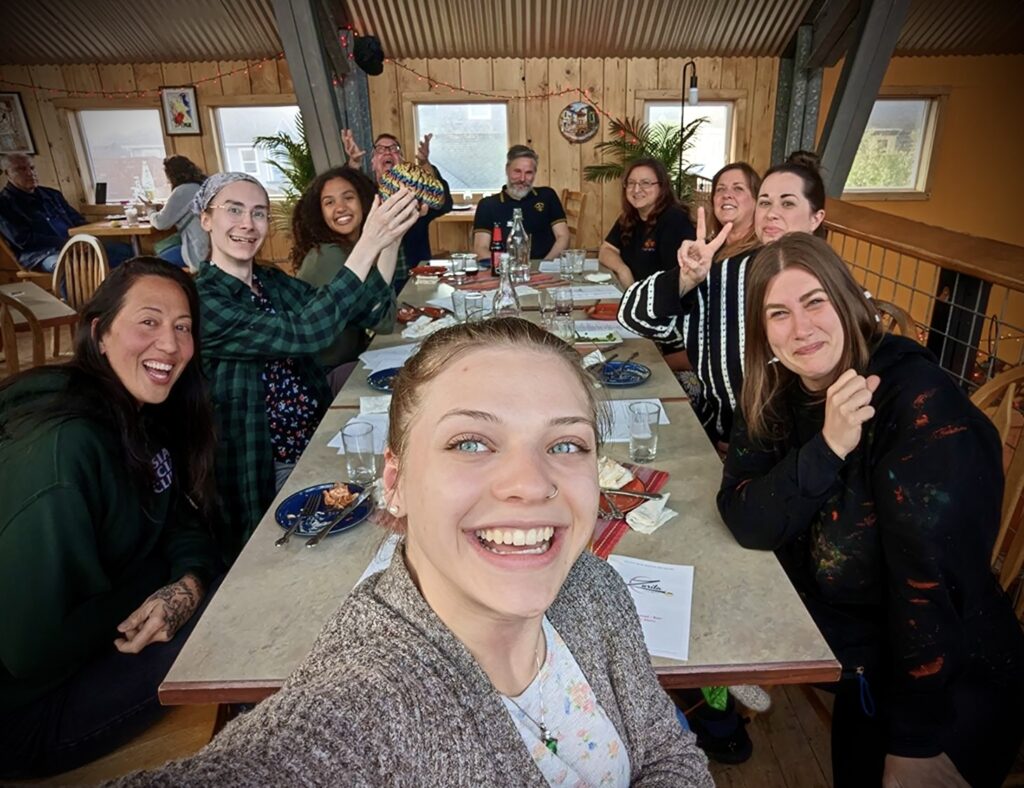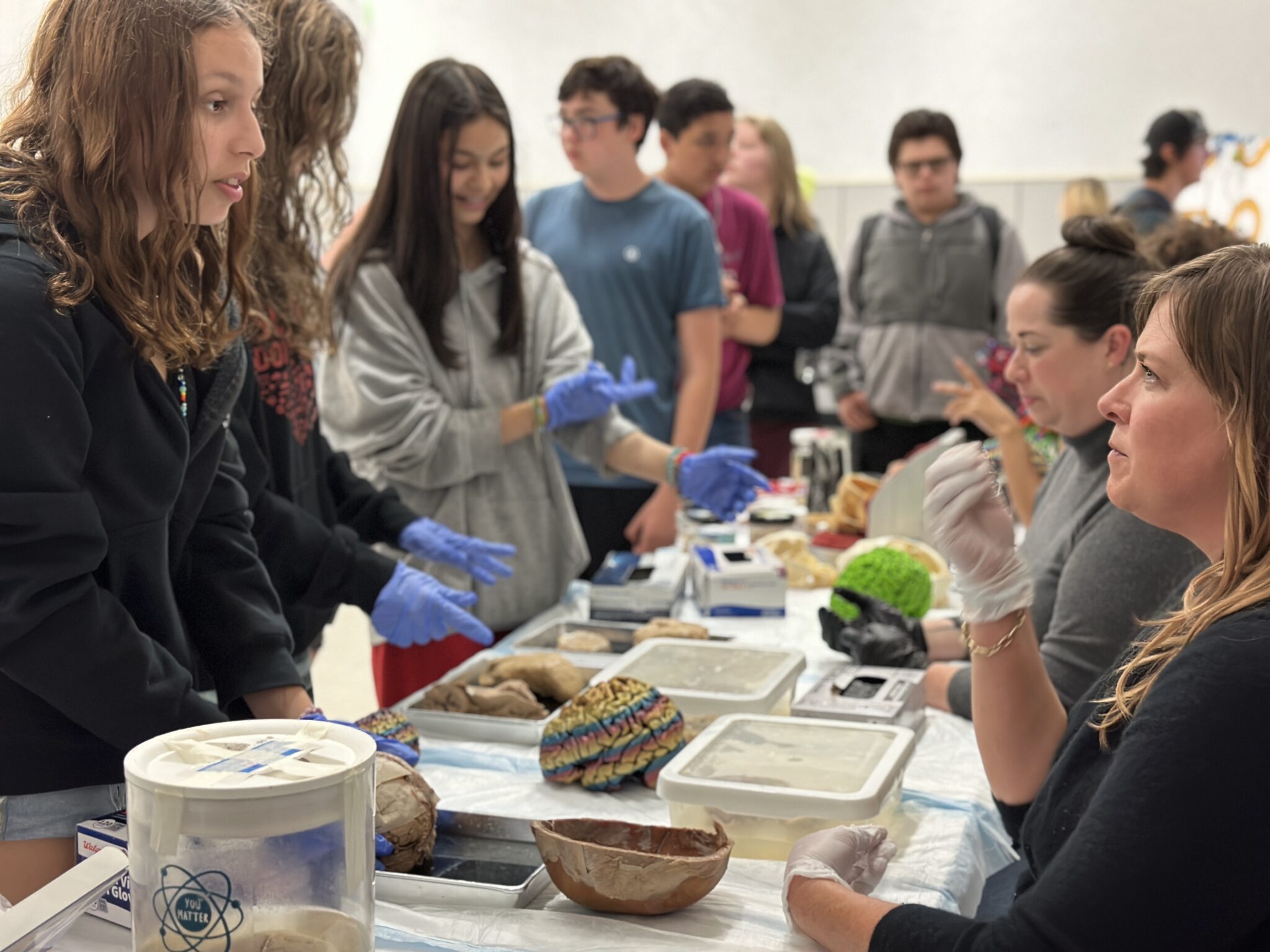
“Sabía poco, pero al menos sabía eso: que nadie habla por los demás. Que aunque queramos contar historias ajenas terminamos siempre contando la historia propia”
—Alejandro Zambra
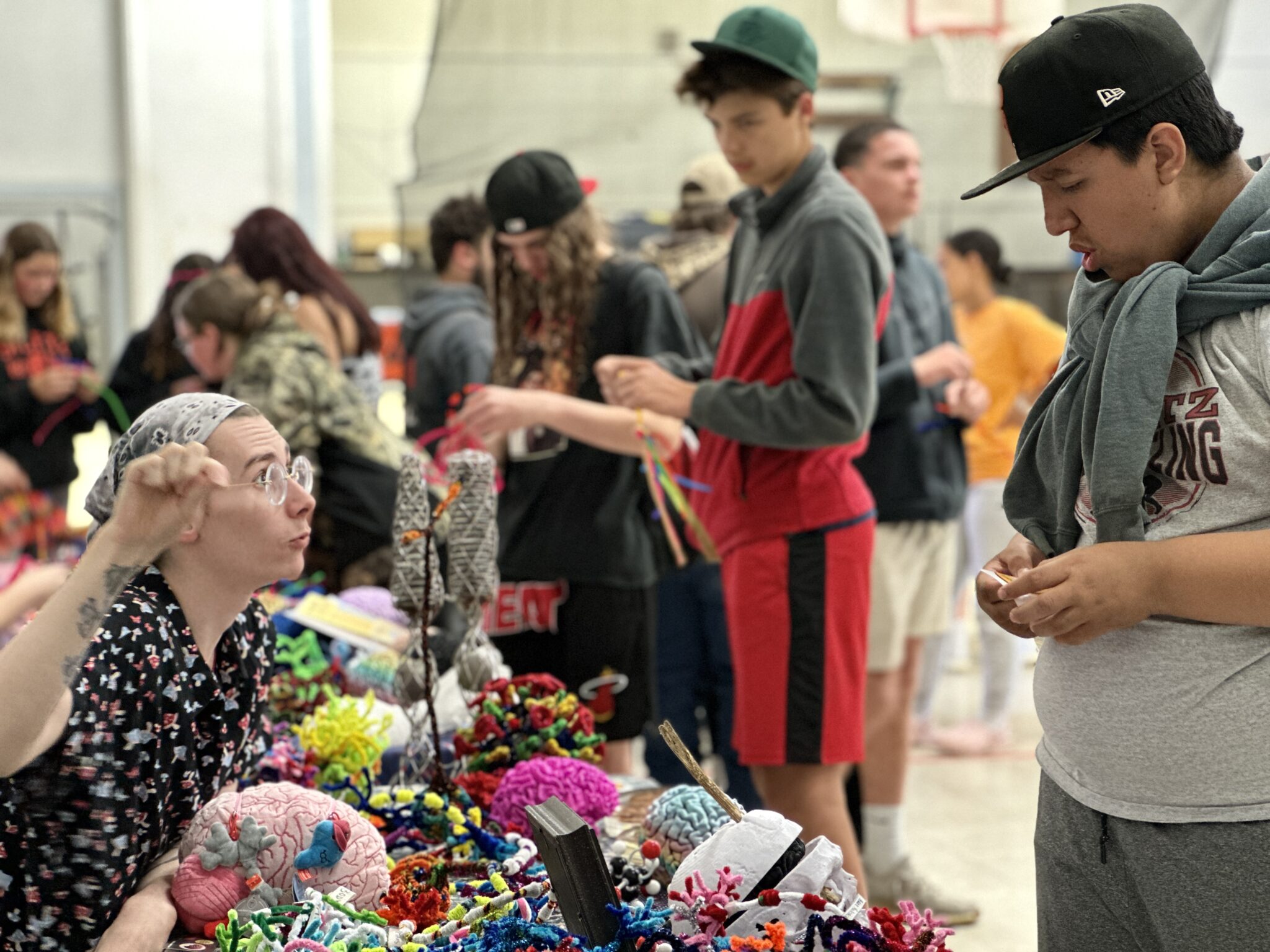
Storytelling and the brain
Storytelling has a long history, and it’s a powerful and accepted method of teaching science.
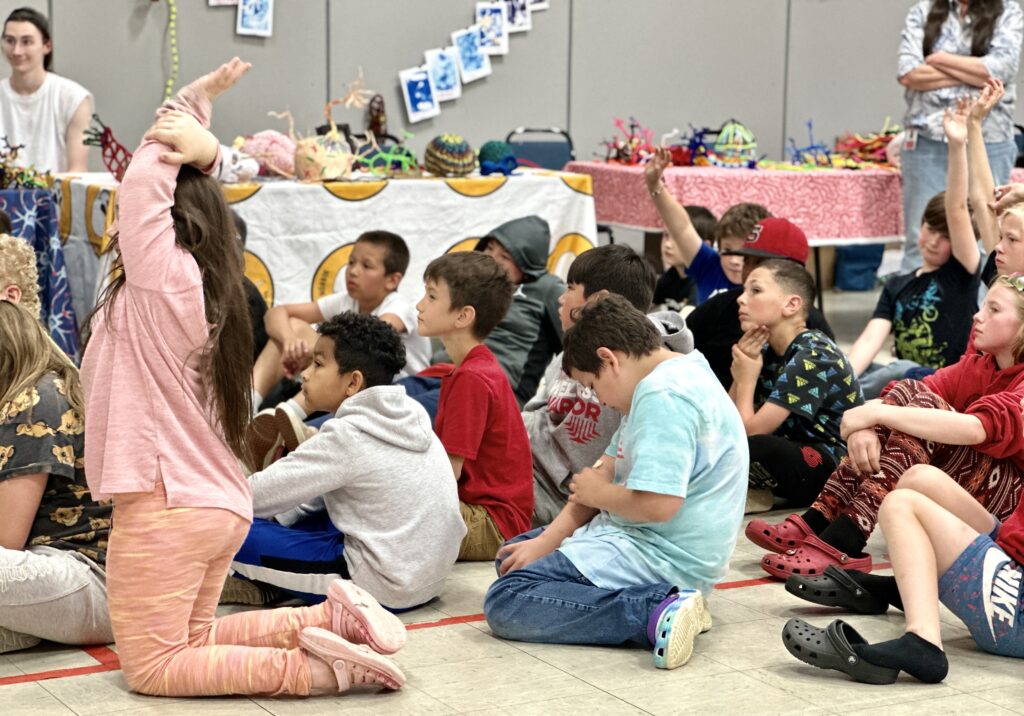
Research finds that curricula which include stories result in greater comprehension of material, longer retention of information, and a stronger personal connection between teller and listener. Similarly, music, rhythm and art-making also contribute to academic achievement, retention and brain development, while fostering a stronger sense of community.
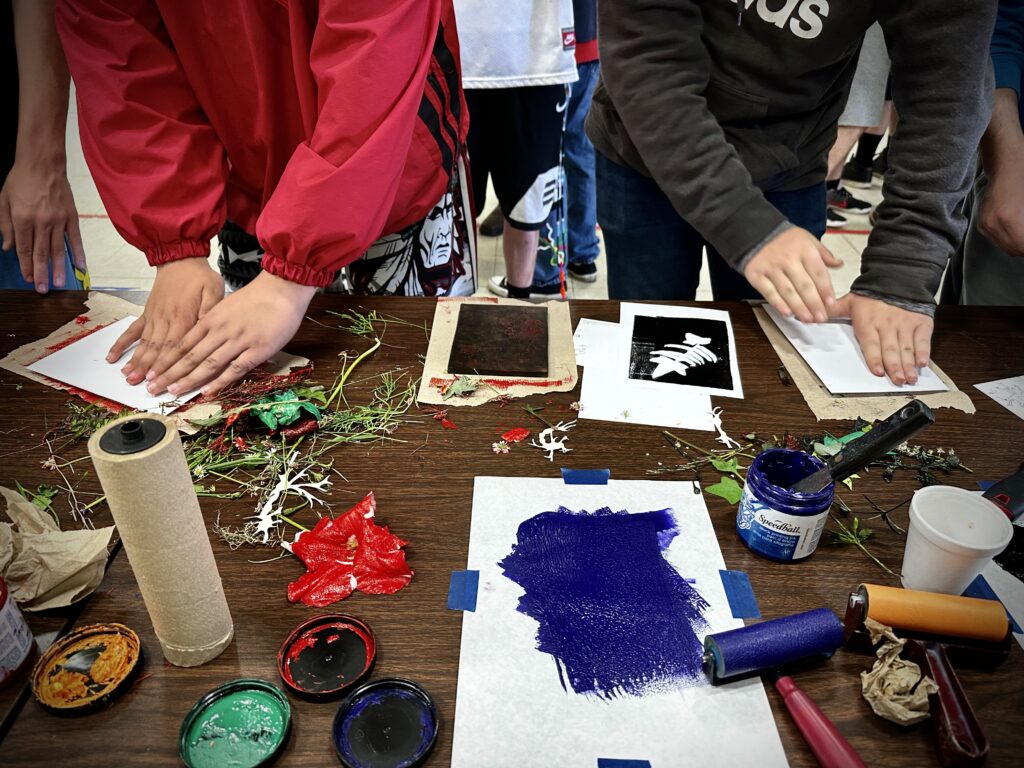
LEARN MORE: Until the story takes shape
LEARN MORE: Siletz Stories, Singing, Dancing & Brains!
LEARN MORE: Can music orchestrate emotional intelligence?
LEARN MORE: The Magic of Music
LEARN MORE: Dialogues: The Science and Power of Storytelling
LEARN MORE: Using Narratives to Teach Students Enrolled in Science and Medical Science Bachelor’s Degree Programs
LEARN MORE: Storytelling as a Tool to Enhance Conceptual Knowledge in Cell Biology
LEARN MORE: Tell me a story–a conceptual exploration of storytelling in healthcare education
But whose stories? Whose art?
“I knew little, but at least I knew that: that no one speaks for others. That although we want to tell other stories we always end up telling our own story“
—Alejandro Zambra
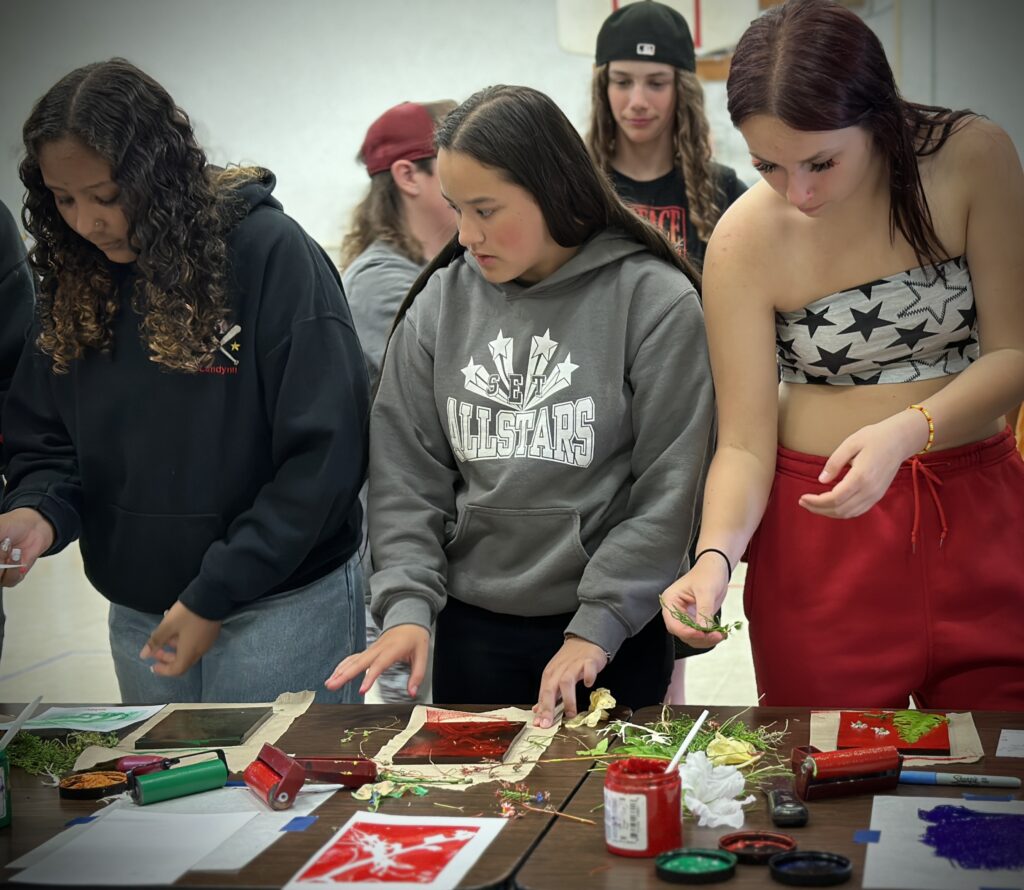
Did you know that Native stories describe language and tool use by Crow? What do the ordeals of Little Raccoon, or the Trickster impulses of Coyote tell us about our own struggles and experience?
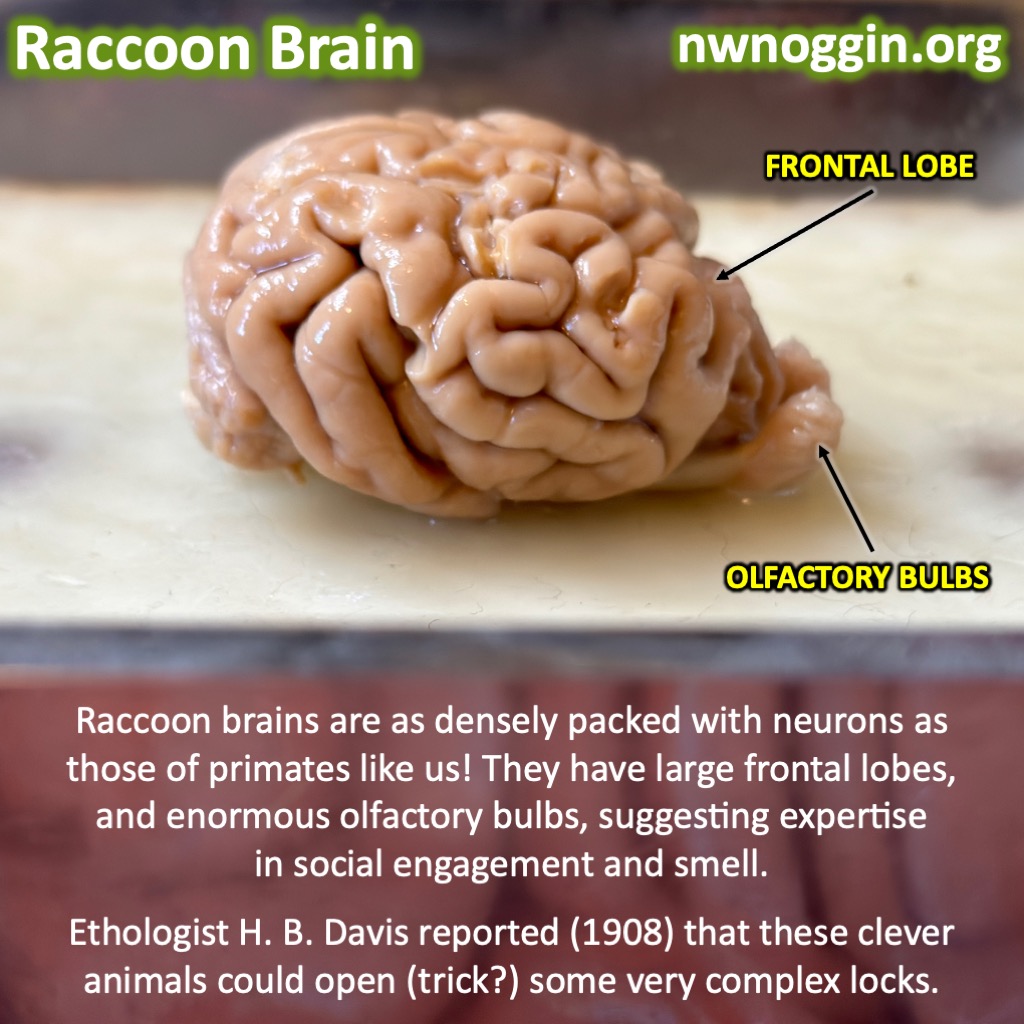
What makes these tales compelling, memorable, instructive, thrilling, engaging, motivating and fun? What do they tell us about the structure and function of animal brains and behaviors – and our own?
LEARN MORE: The Raccoon: A Study in Animal Intelligence
LEARN MORE: Do wild raccoons (Procyon lotor) use tools?
LEARN MORE: Trickster Brains @ Shahala
LEARN MORE: Endocranial Development in the Coyote (Canis latrans) and Gray Wolf (Canis lupus)
We’ve collaborated successfully with Siletz Valley School on interdisciplinary neuroscience outreach projects in the past, visiting classrooms to hear stories and music and explore the neuroscience of storytelling and song thanks to a 2018 grant from the Spirit Mountain Community Fund.
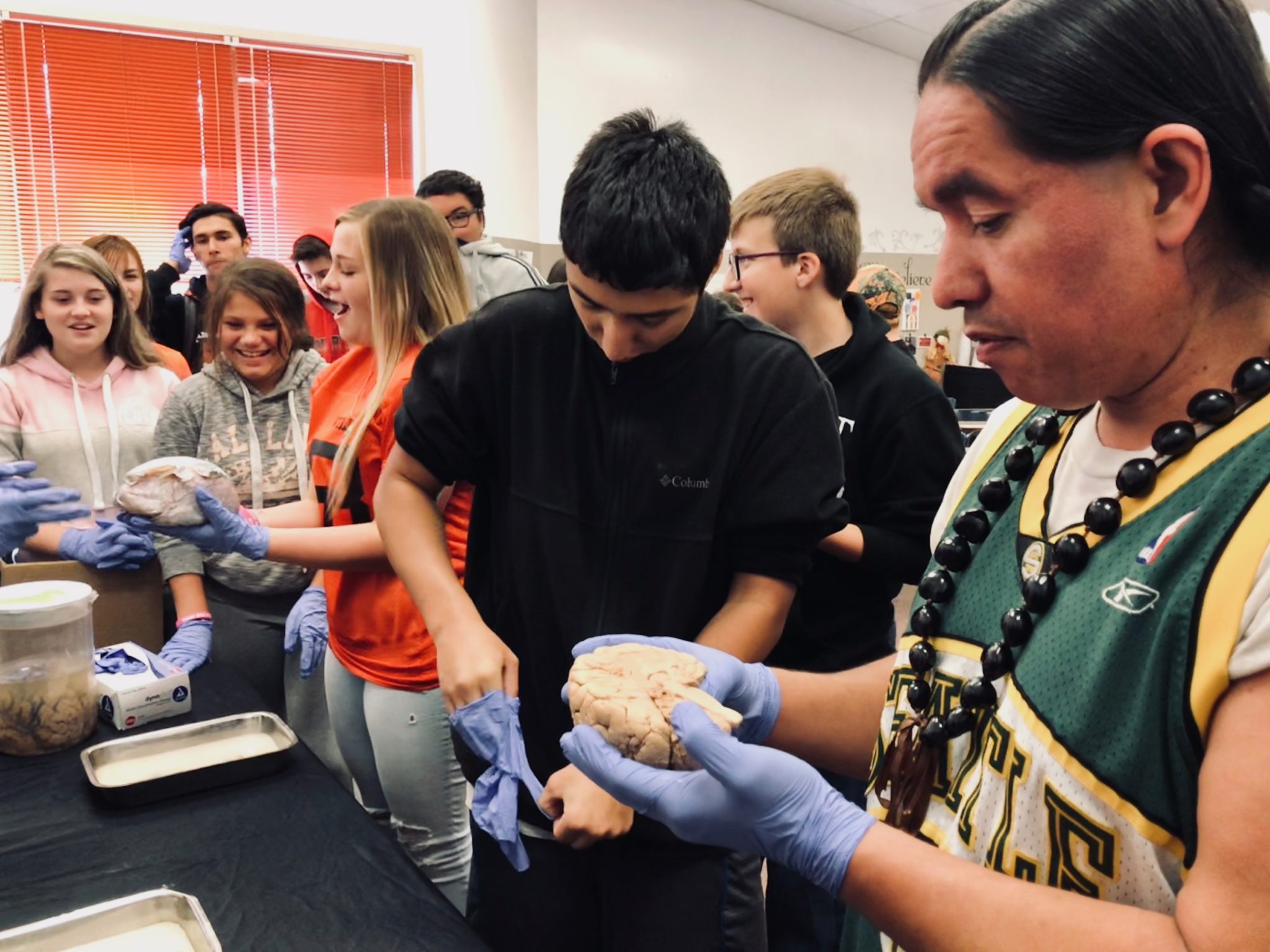
LEARN MORE: Until the story takes shape
LEARN MORE: Joanne Trzcinski on Synapses, Stories & Song!
We also delivered 25 woodpecker red 3D printed brains to Siletz teachers and staff!

Woodpeckers are important in Siletz culture, and we partnered with Shashi Jain (formerly at Intel) and the Portland 3D Printing Lab to provide customized teaching tools (noggins!) that are both compelling and relevant.
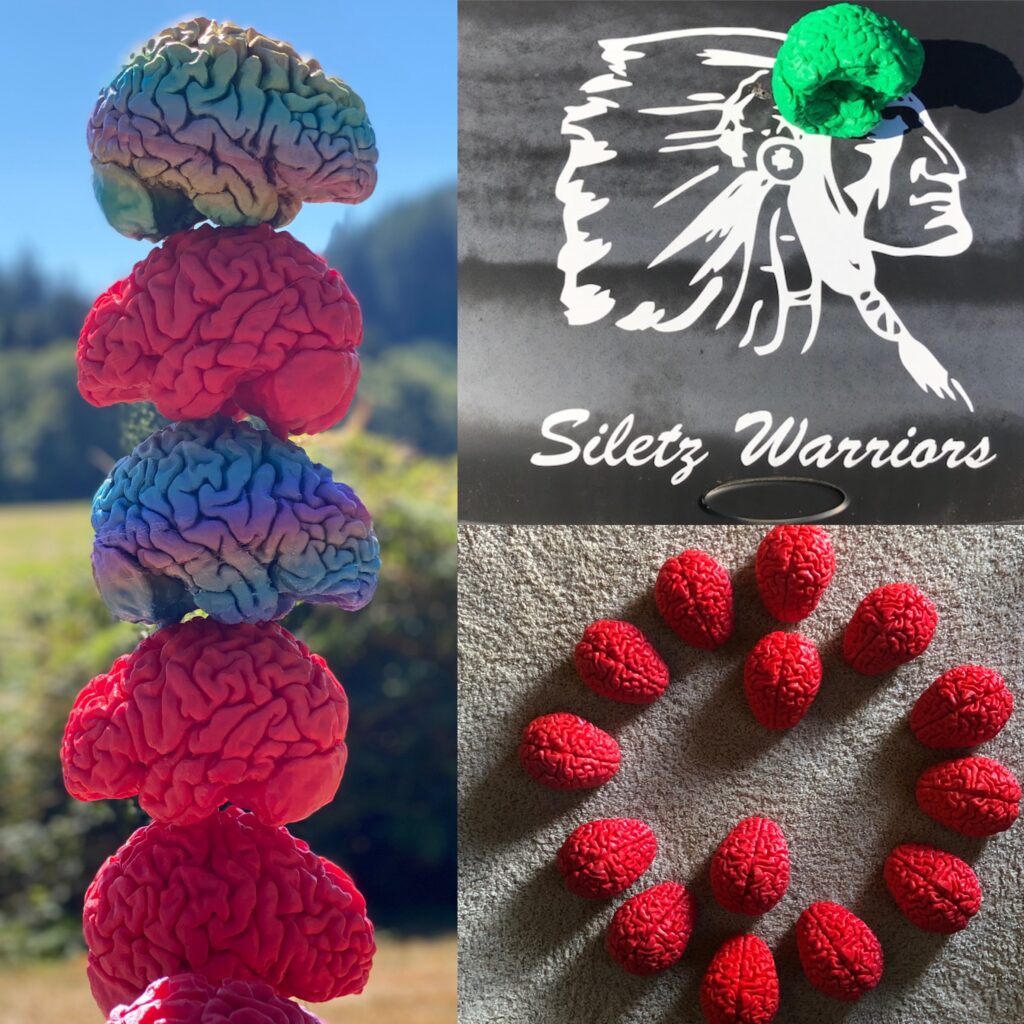
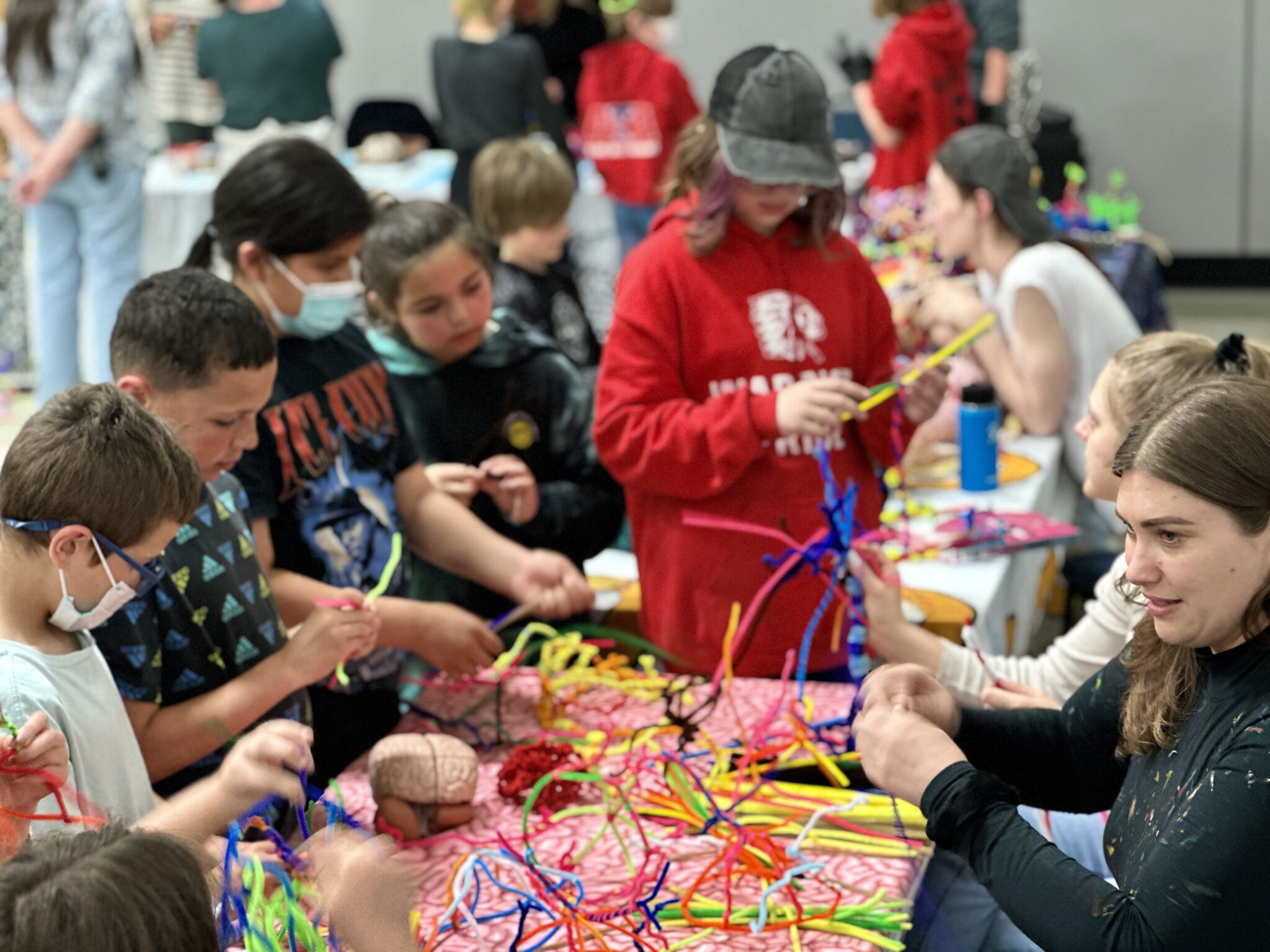
LEARN MORE: Confederated Tribes of Siletz Indians
LEARN MORE: Birding – Siletz Bay National Wildlife Refuge
LEARN MORE: Our Culture and History: The Confederated Tribes of the Coos, Lower Umpqua and Siuslaw Indians
LEARN MORE: The People Are Dancing Again: The History of the Siletz Tribe of Western Oregon
These visits and donations have reportedly had significant and lasting impact.
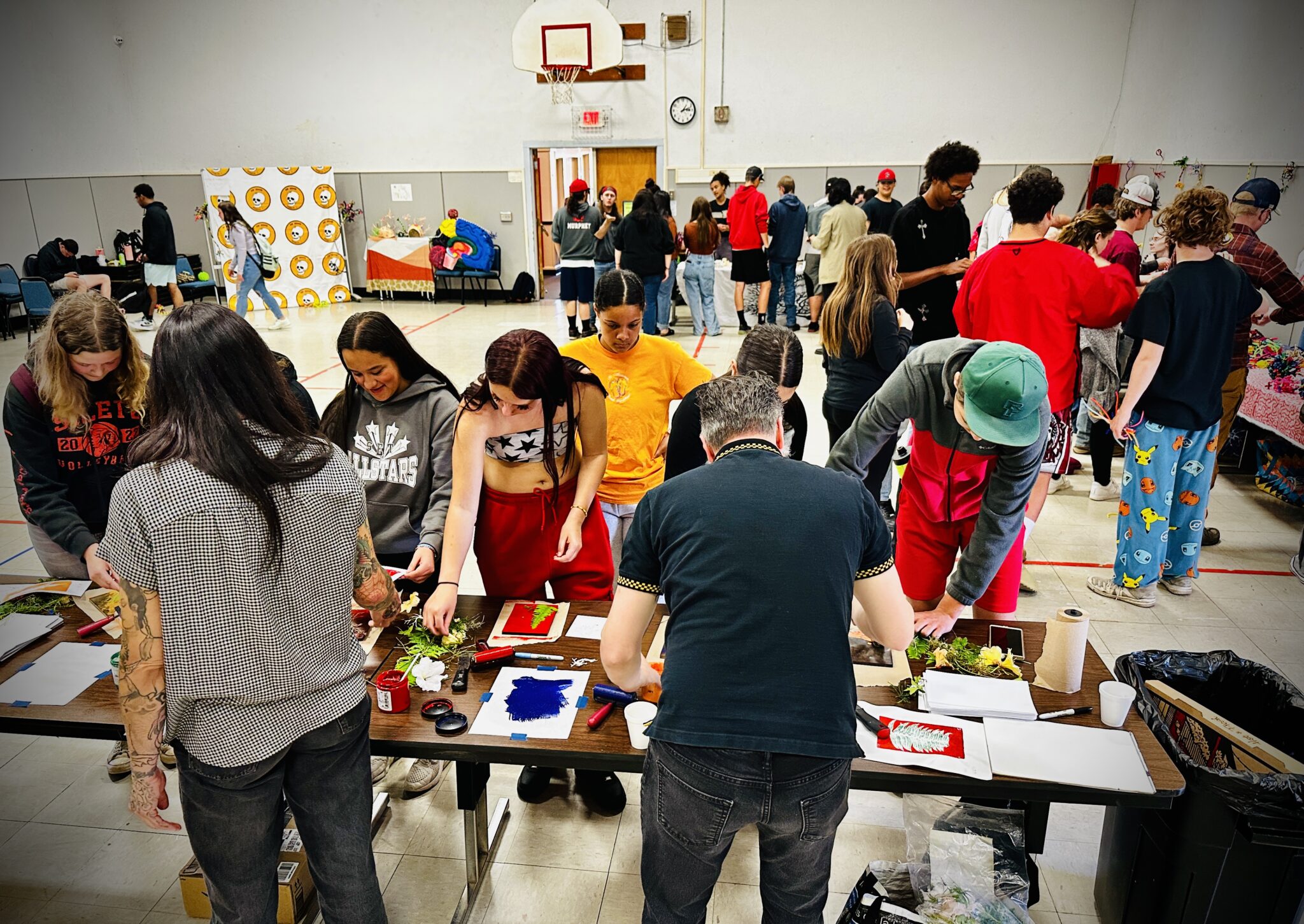
According to a science teacher at Siletz, after our visit in 2018 students advocated for opportunities to hear and play more music, they were more aware of changing circadian and sleep cycles in adolescence, and were more understanding of diverse developmental experiences and how they are not alone in facing challenges.
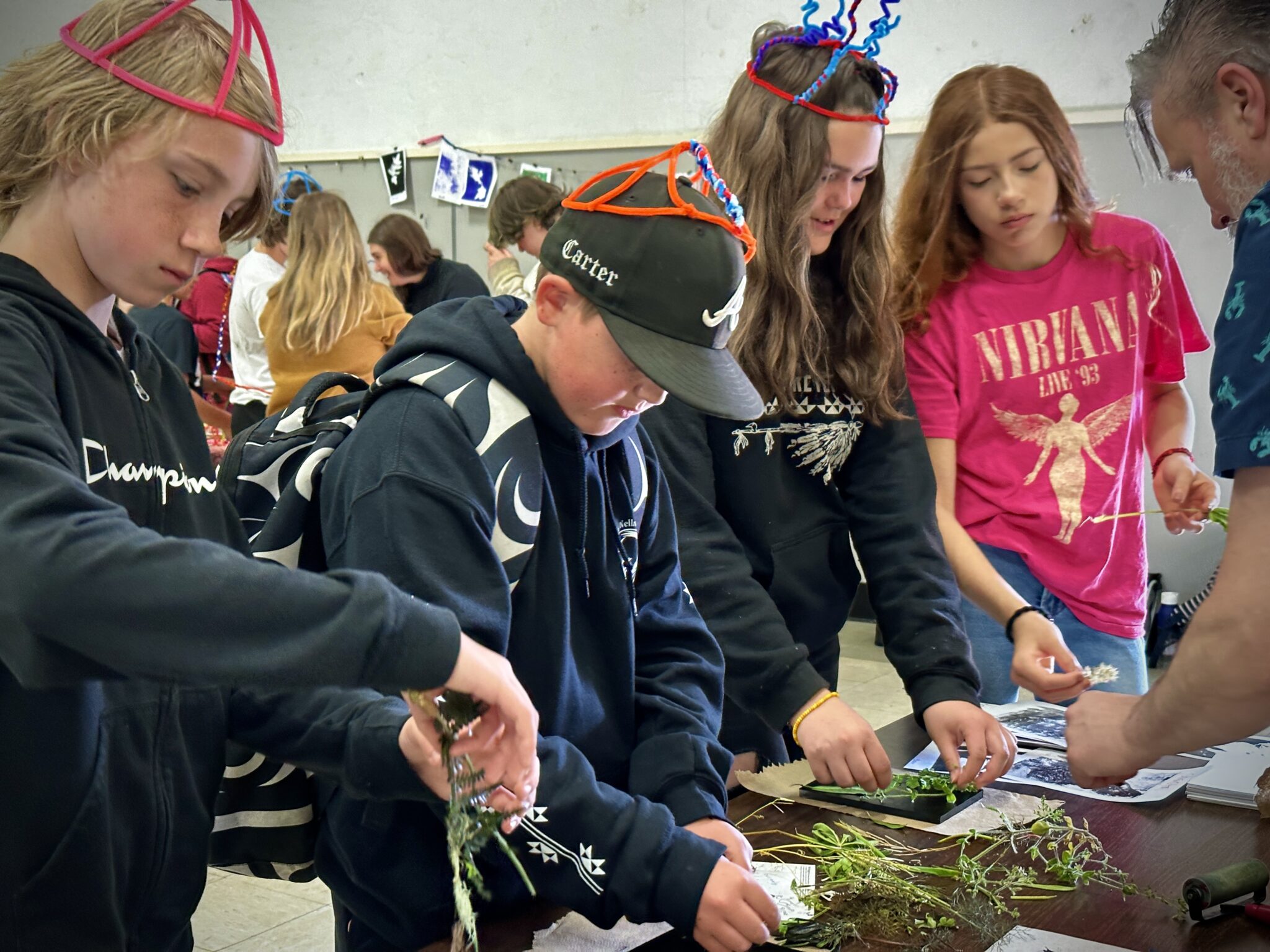
A spring return!
With generous support from the Roundhouse Foundation, and the teachers, students and staff at Siletz Valley School, we brought nine informed and enthusiastic faculty, graduate students and undergraduates from Portland State University, OHSU, the Pacific Northwest College of Art and the University of Oregon back into Siletz classrooms this May!
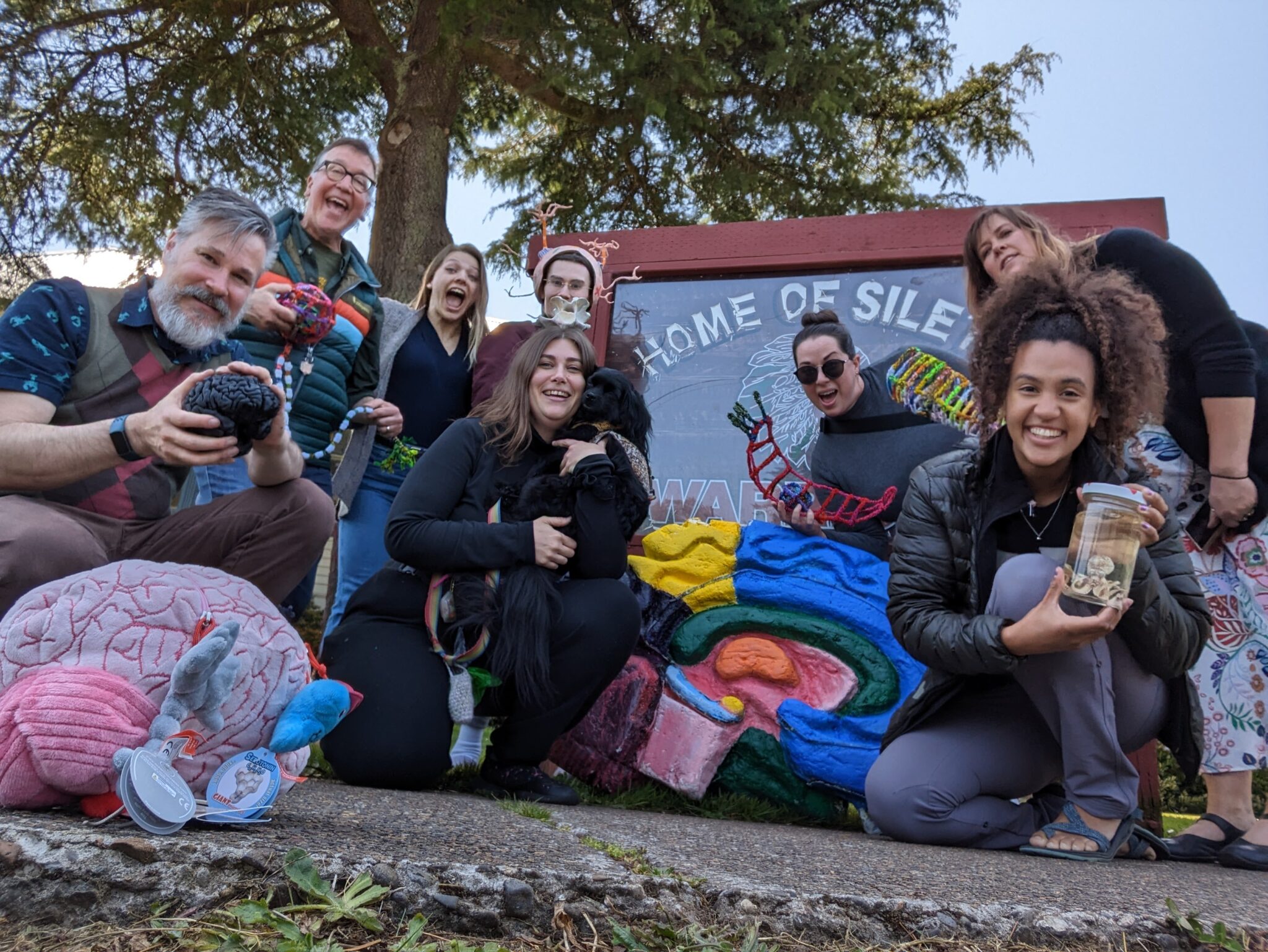
Undergraduates Kadi Rae Smith, Sami Wagner, Natalie Partipilo, Moss Pederson, Dr. Bill Griesar and Jeff Leake drove from PSU, Angelique Allen (and her lab octopus, Tube!) came from the University of Oregon, Kanani Miyamoto joined us from PNCA and Dr. Denesa Lockwood arrived from OHSU.
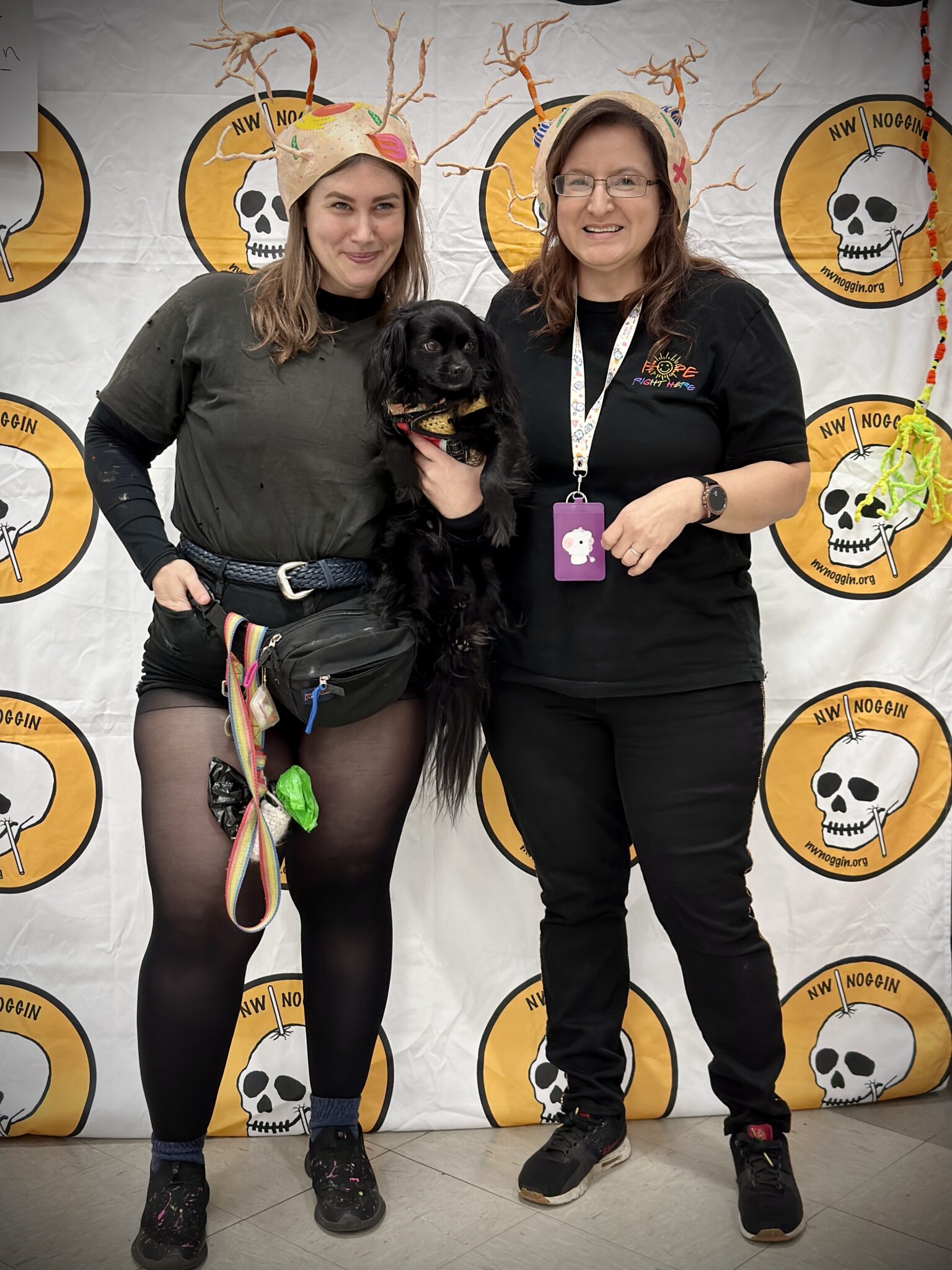
Theresa Smith, the Dee-ni Language & Culture Teacher at Siletz, organized our visit!
Collaboration in Siletz
We spent three nights on the Oregon coast in Nye Beach, driving each morning to Siletz.
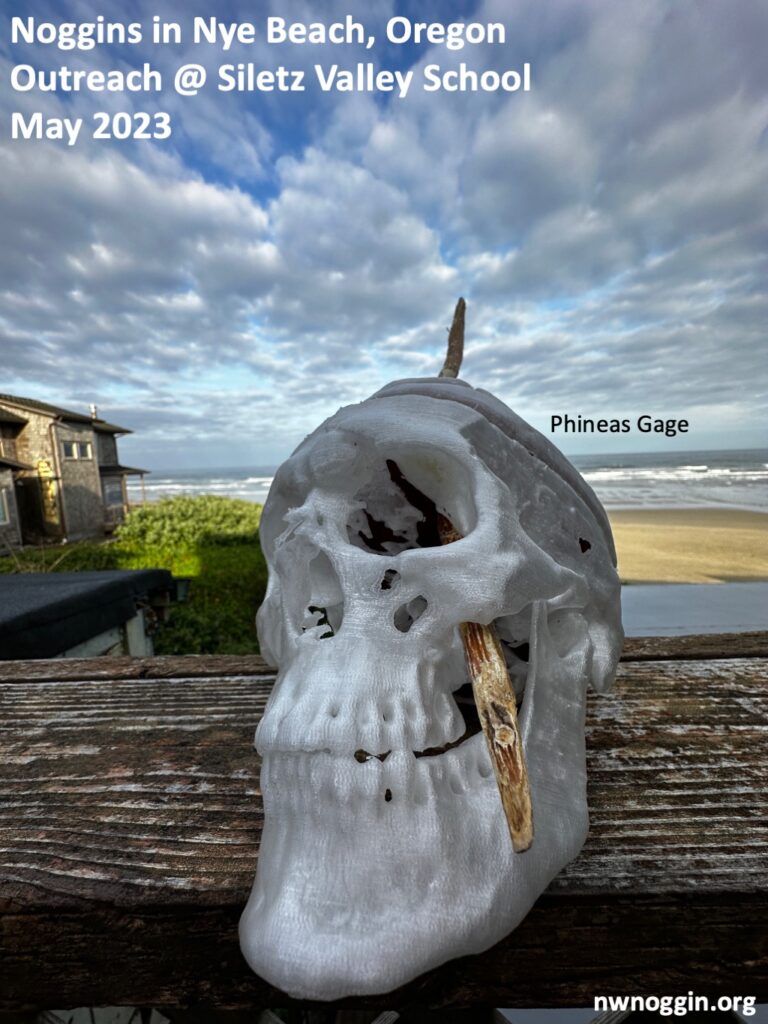
LEARN MORE: Phineas Gage’s great legacy
LEARN MORE: E.L., a modern-day Phineas Gage: Revisiting frontal lobe injury
LEARN MORE: Mapping Connectivity Damage in the Case of Phineas Gage
DAY ONE: Elementary school
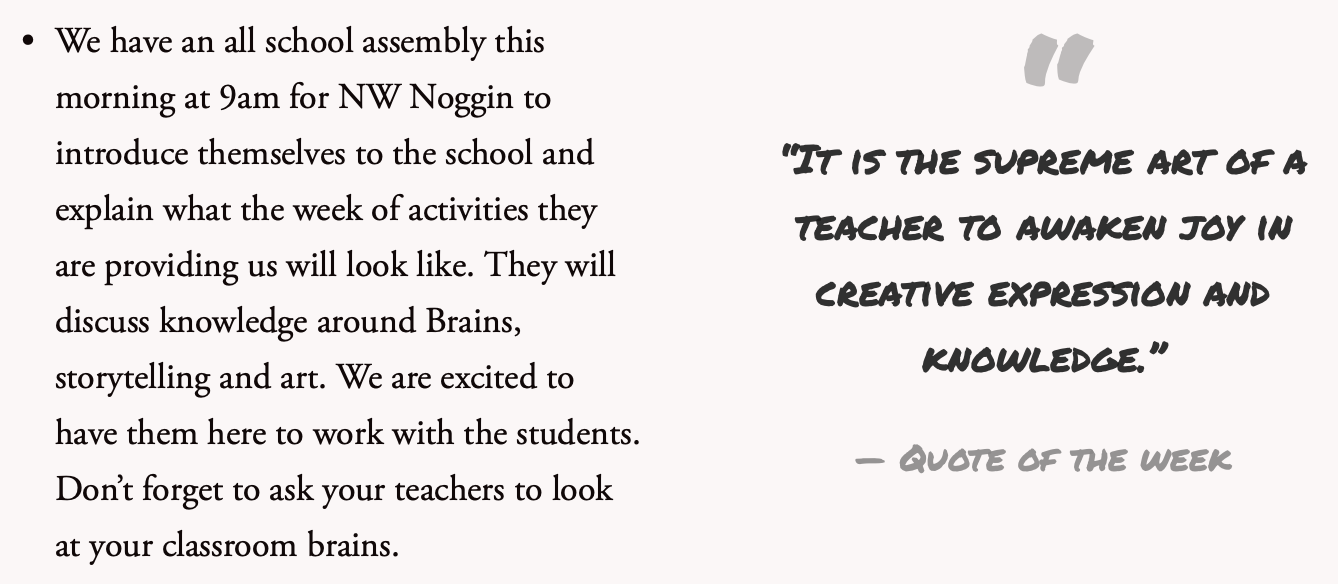
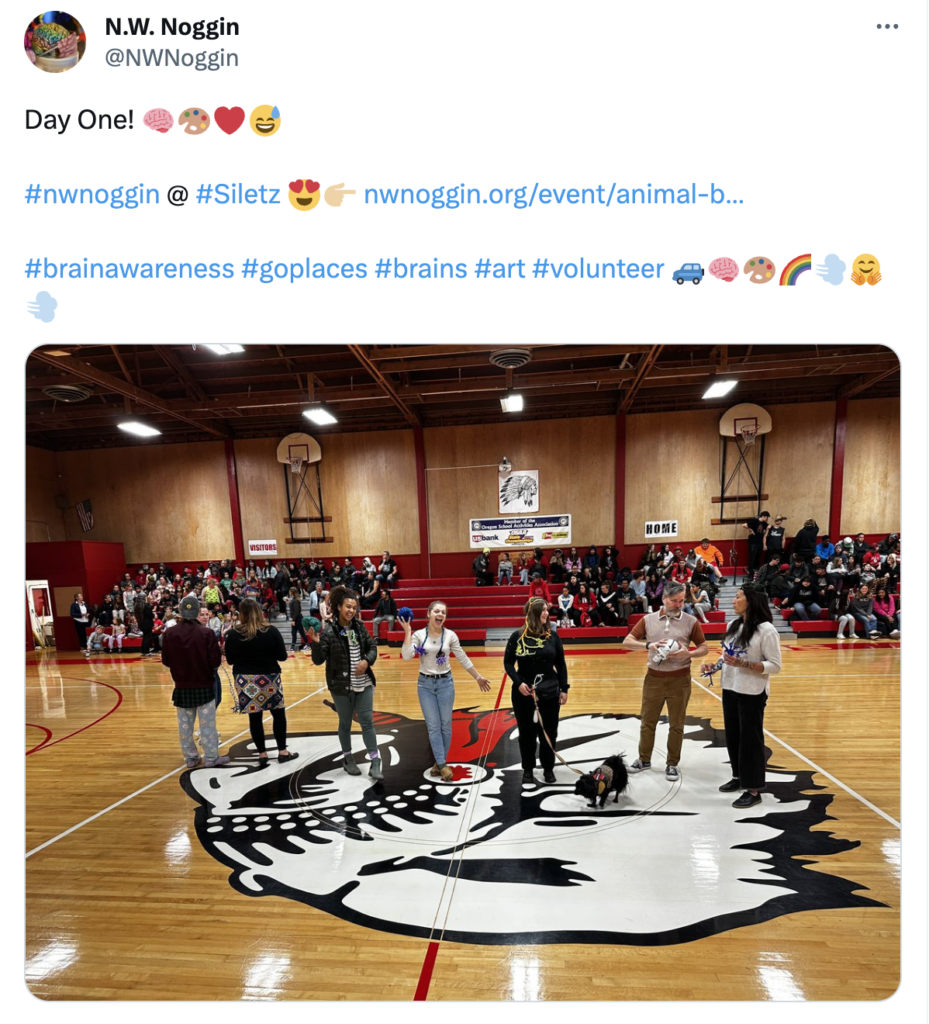
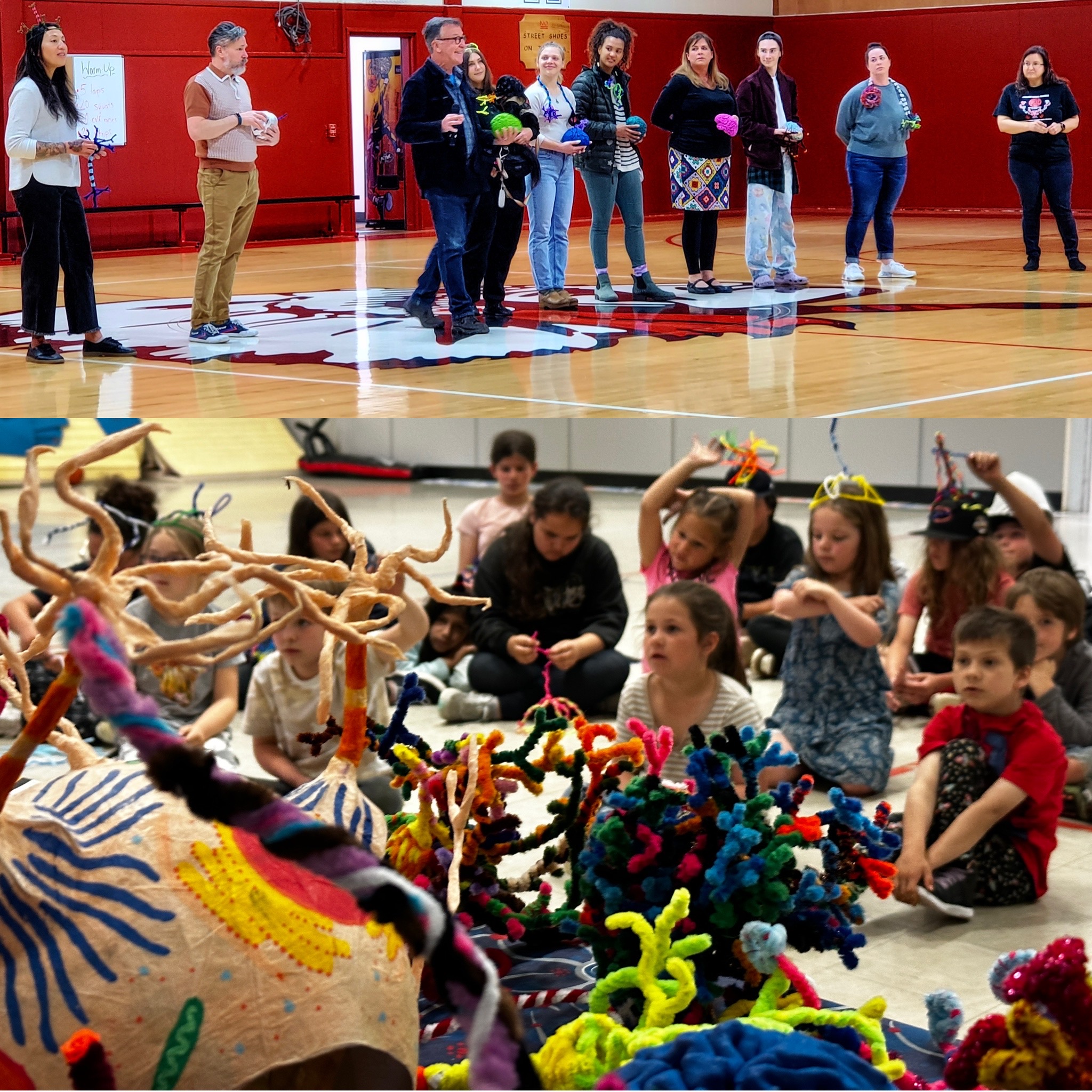
So much art! So many noggins! So many questions!
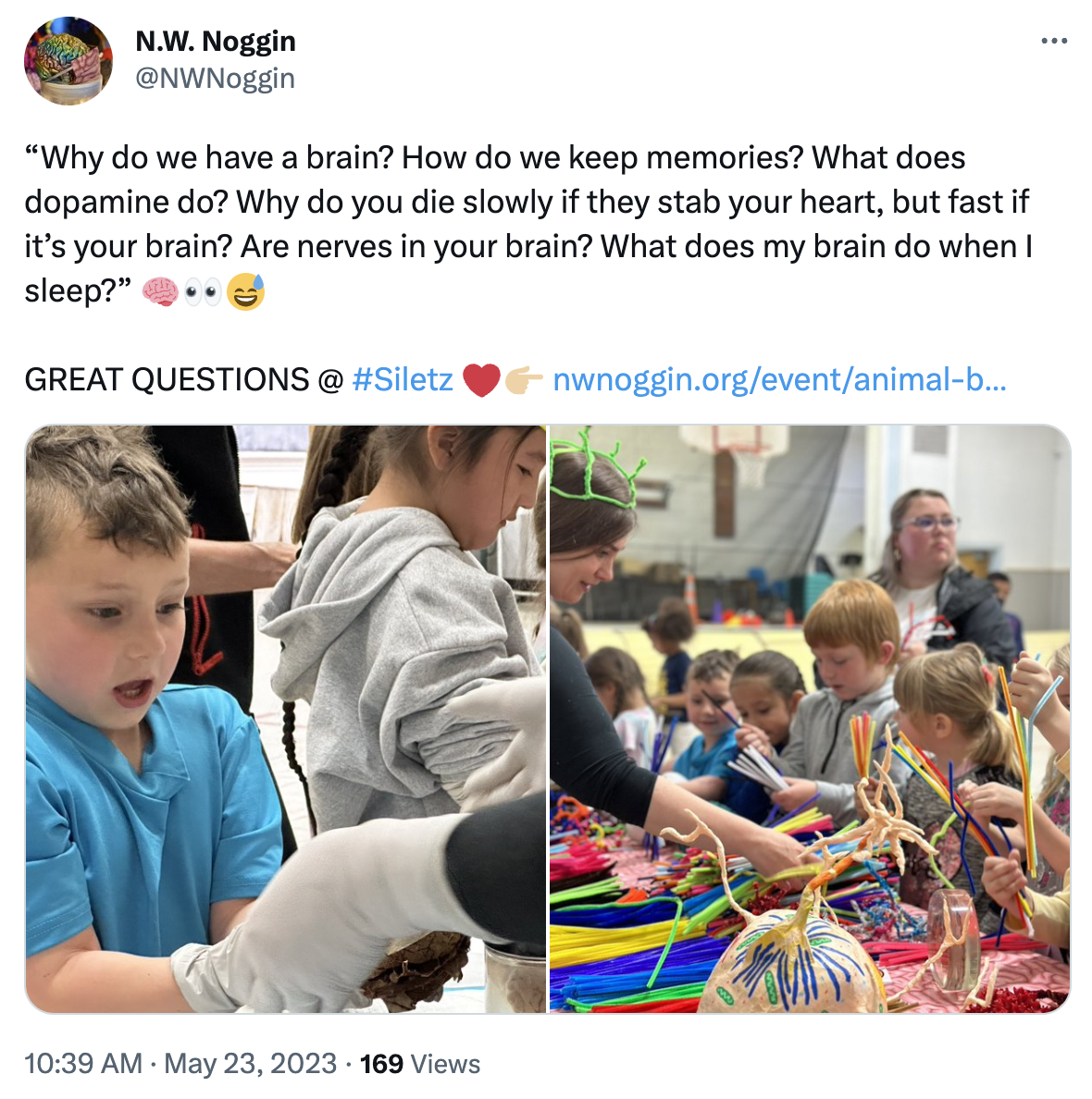
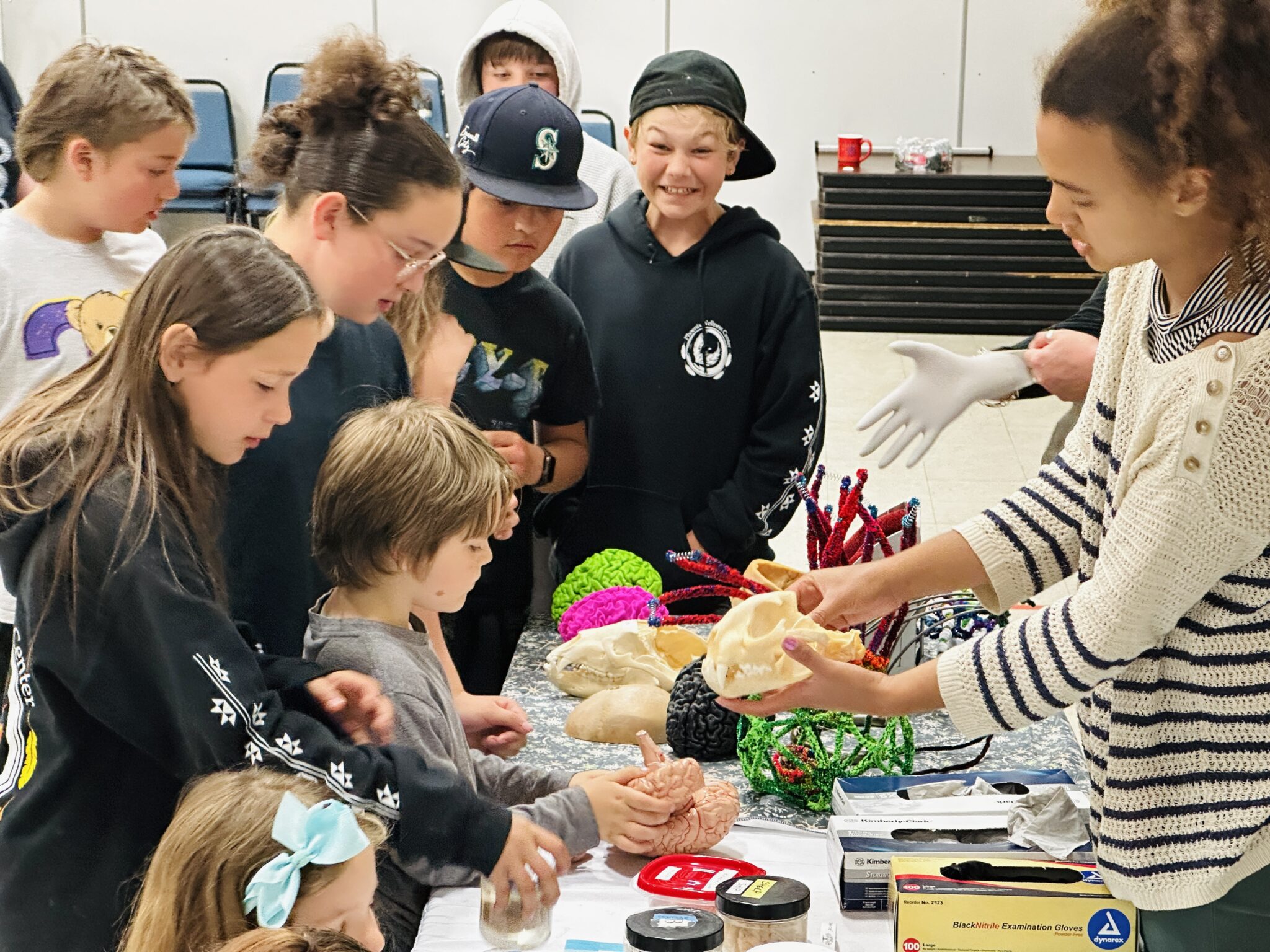
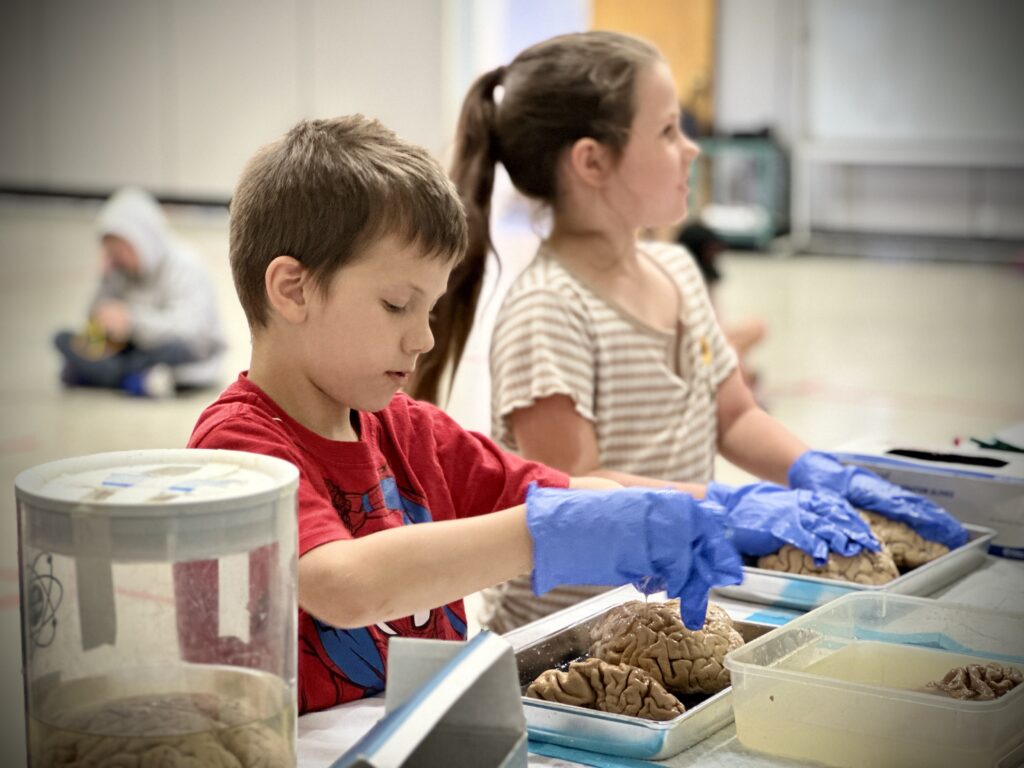
BRAIN CELL GEL PRINTS
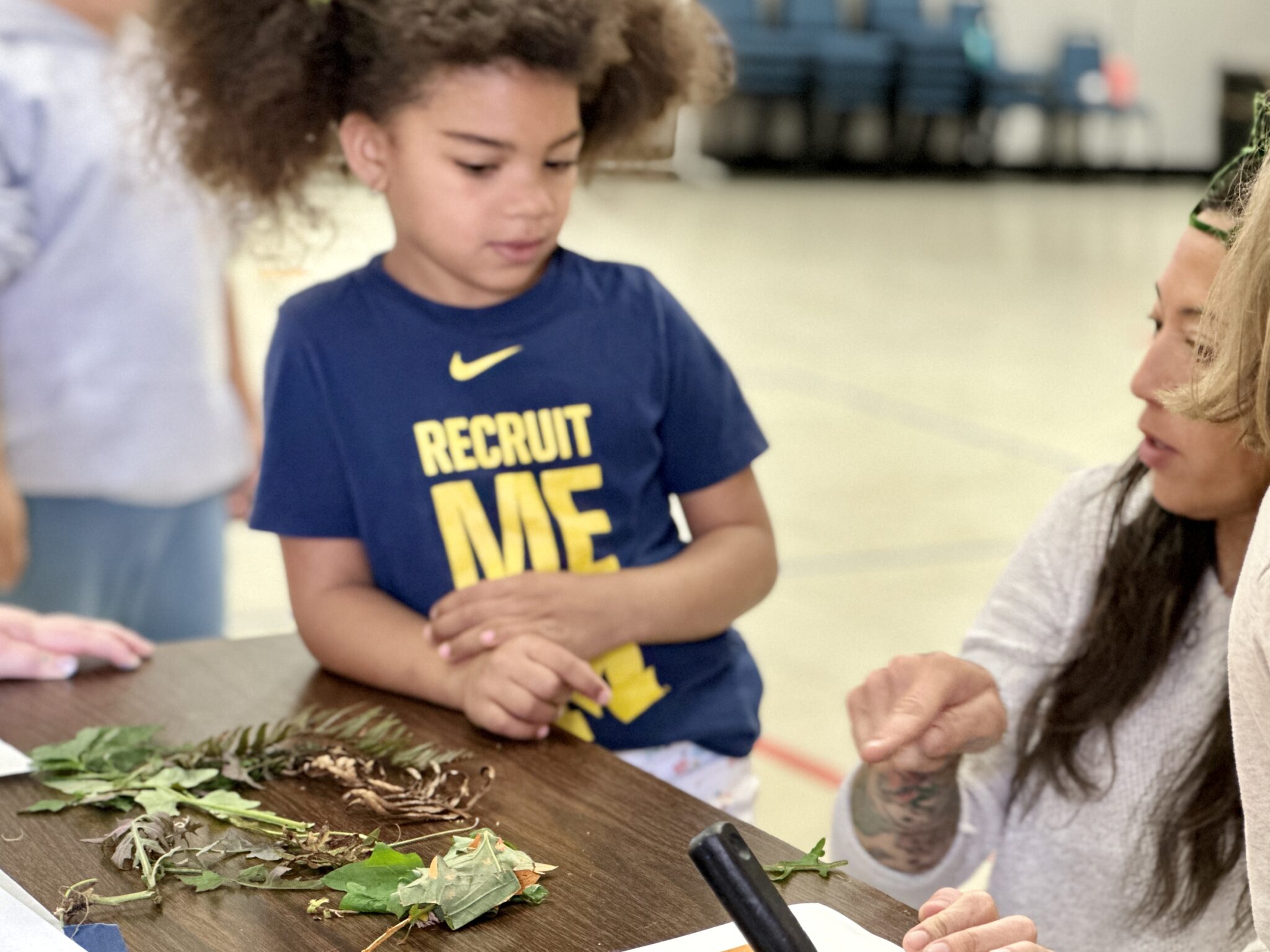
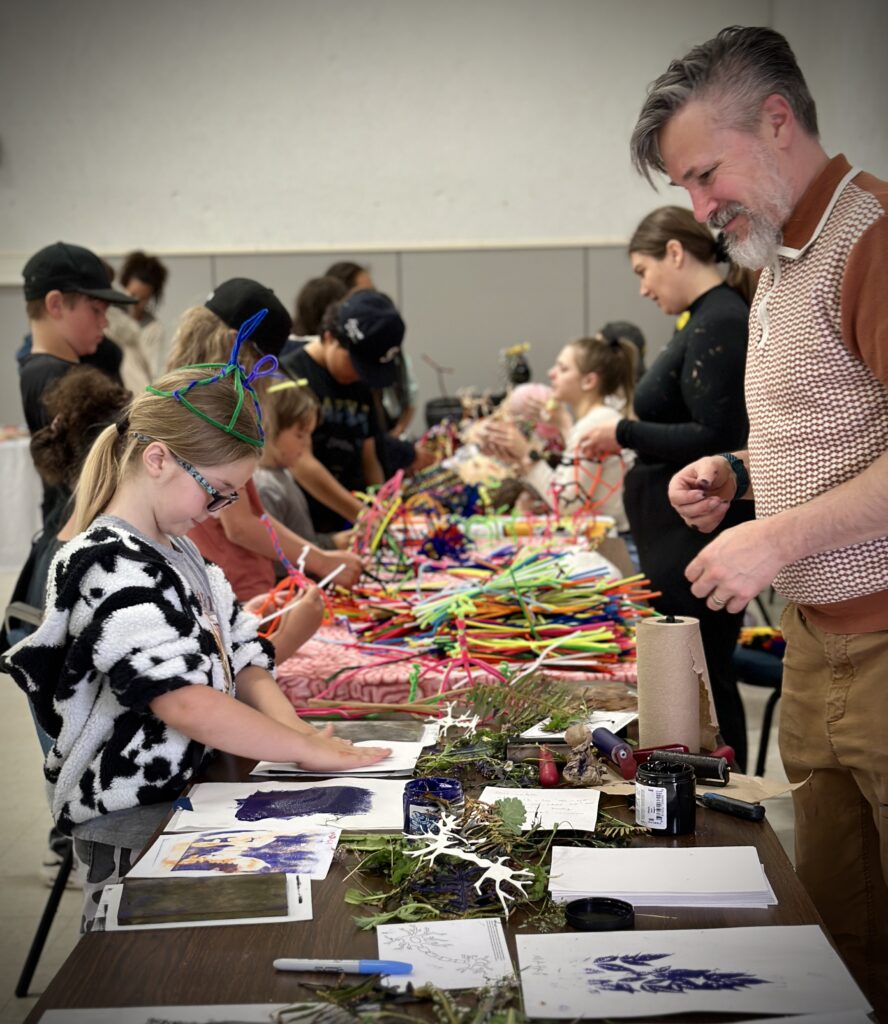
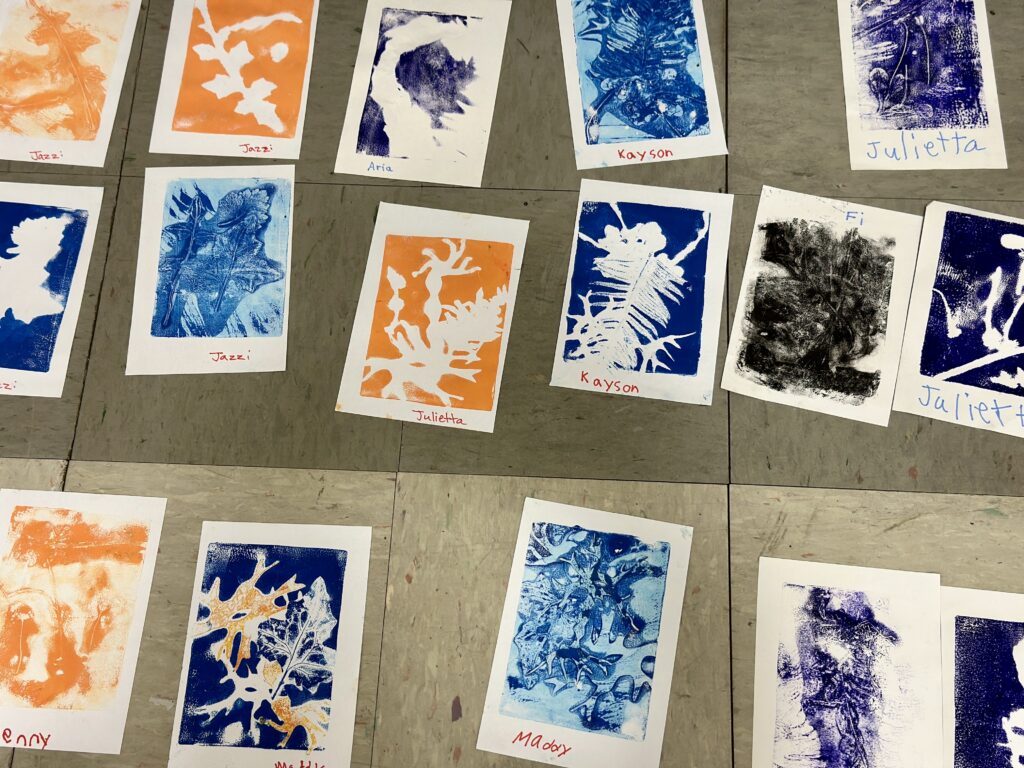
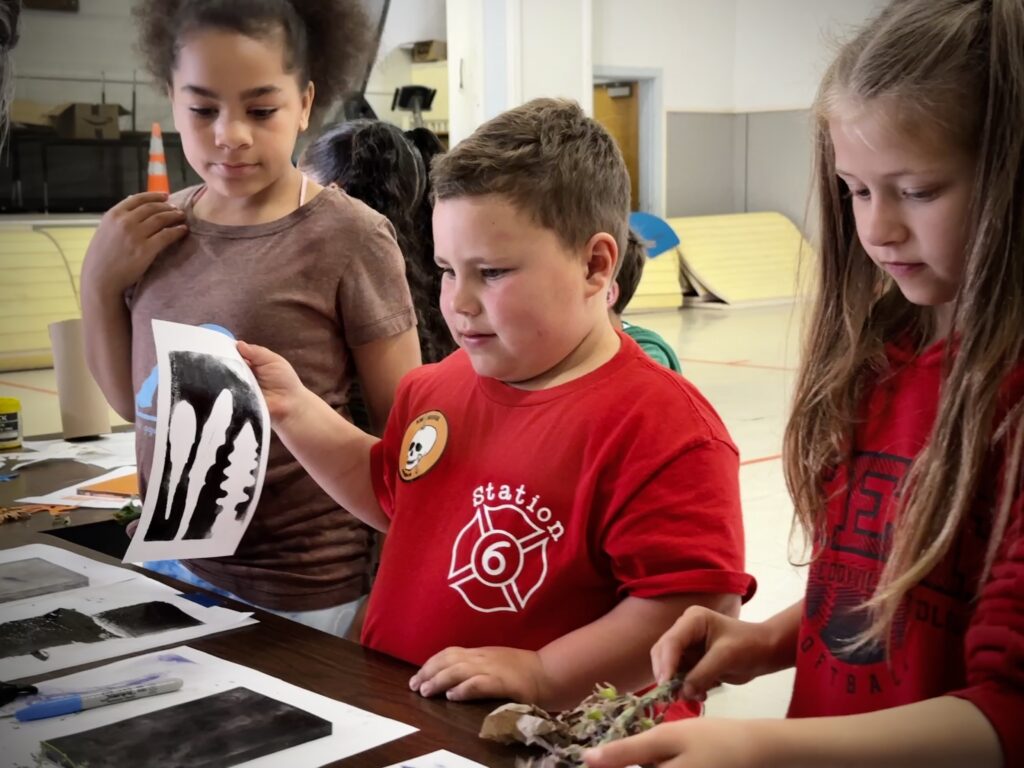

MAKE YOUR OWN: Brain cell gel prints
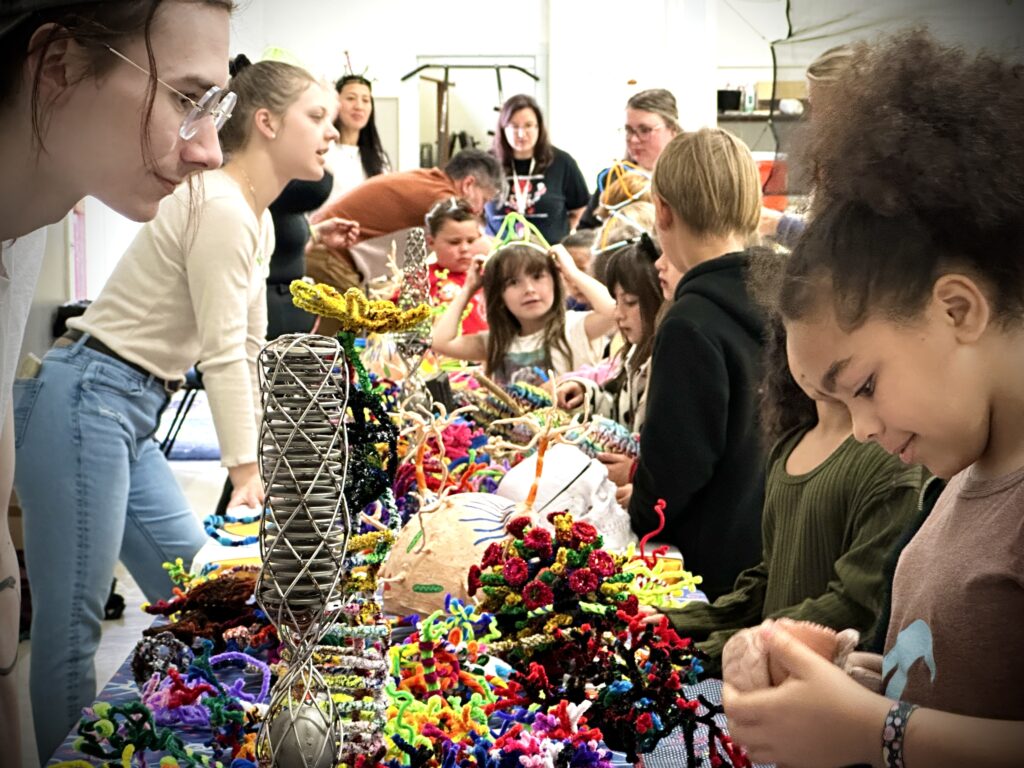
PIPE CLEANER BRAIN CELLS
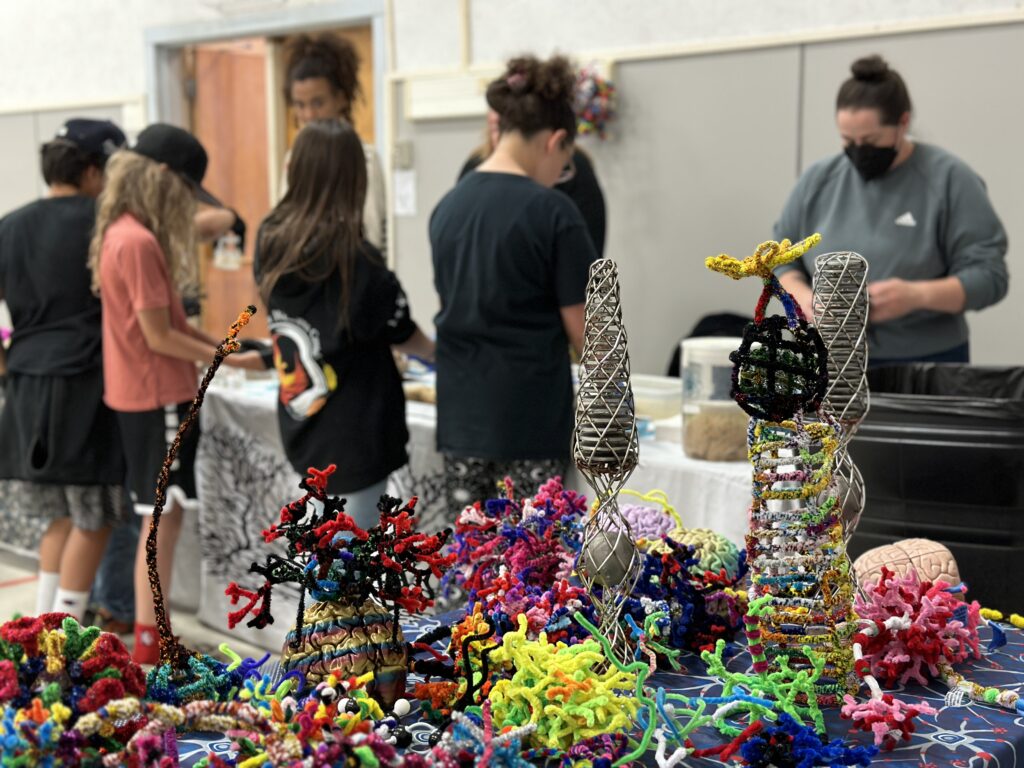
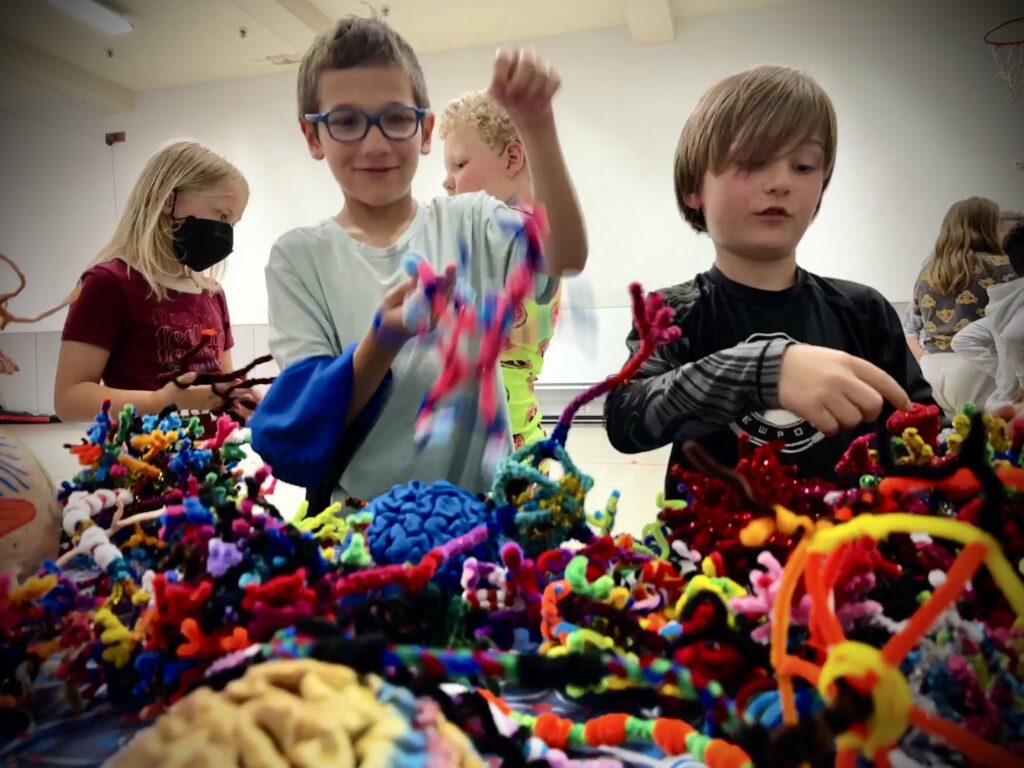
MAKE YOUR OWN: Pipe cleaner brain cells
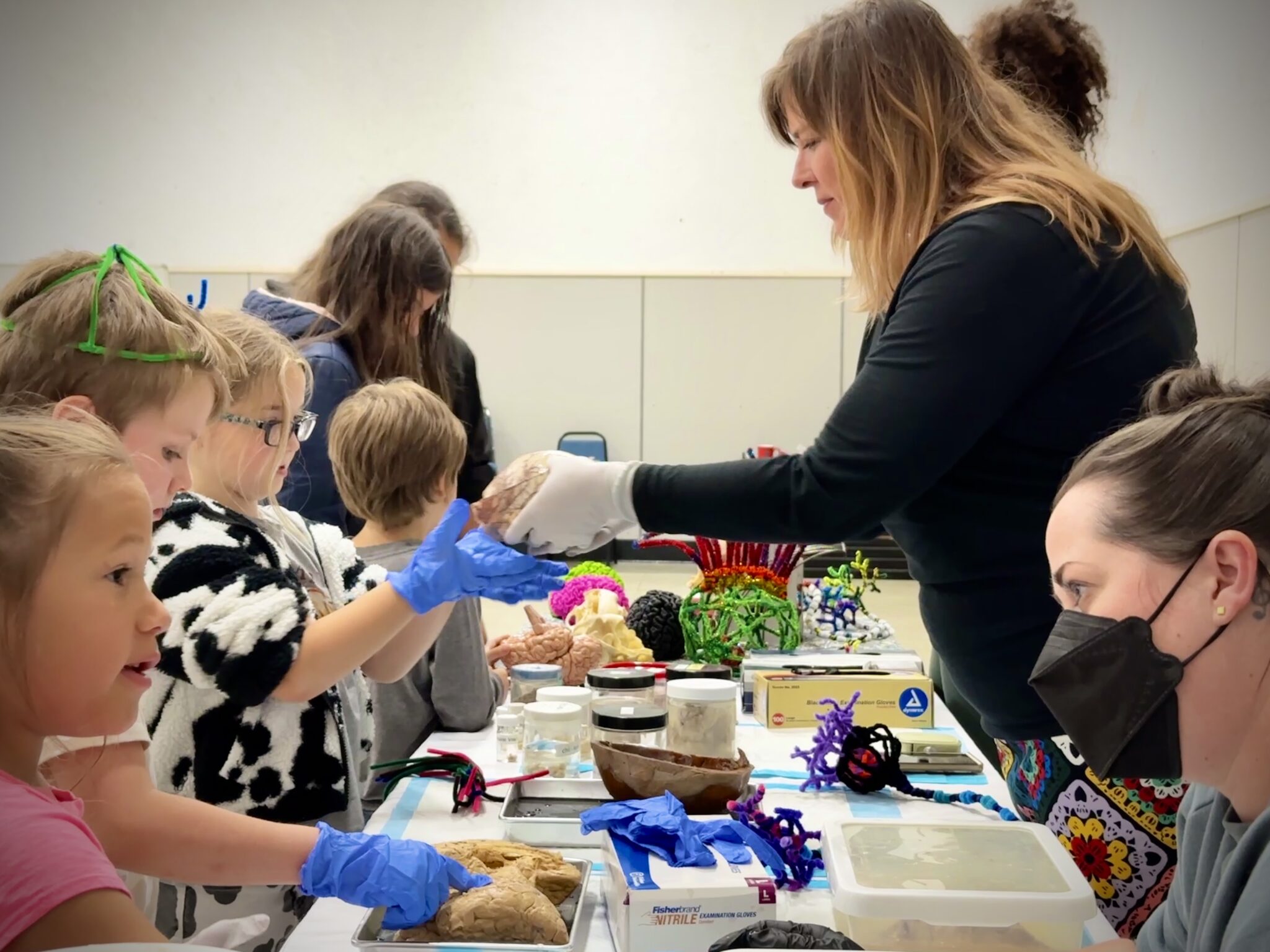
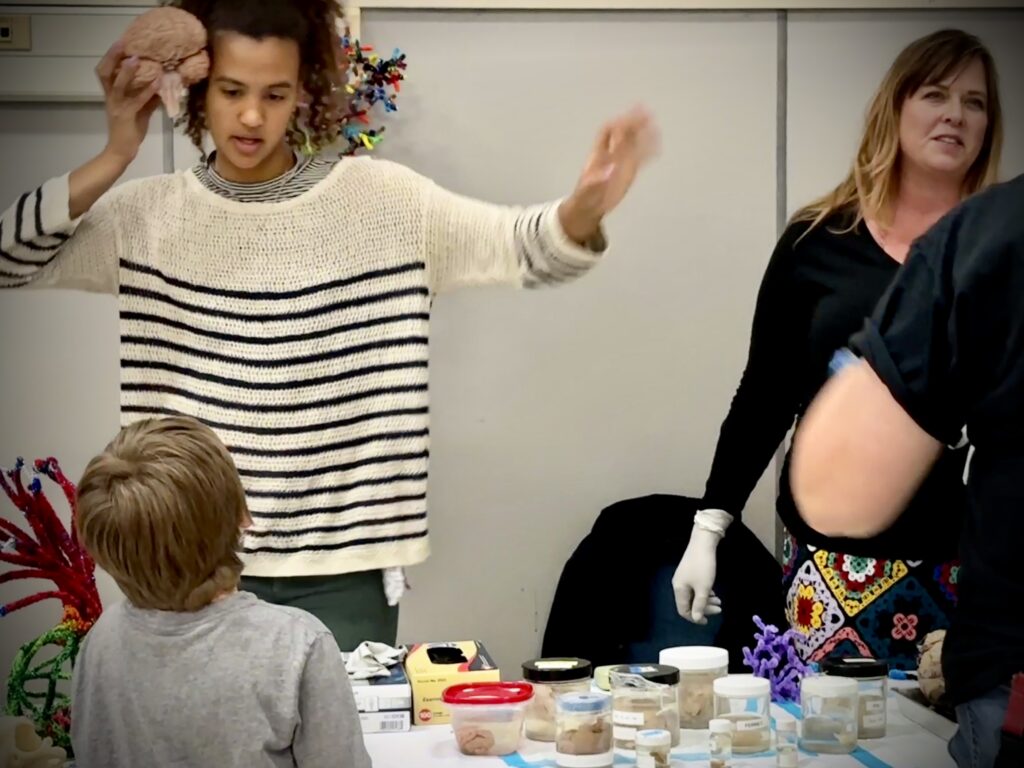

BRAIN CELL HATS!
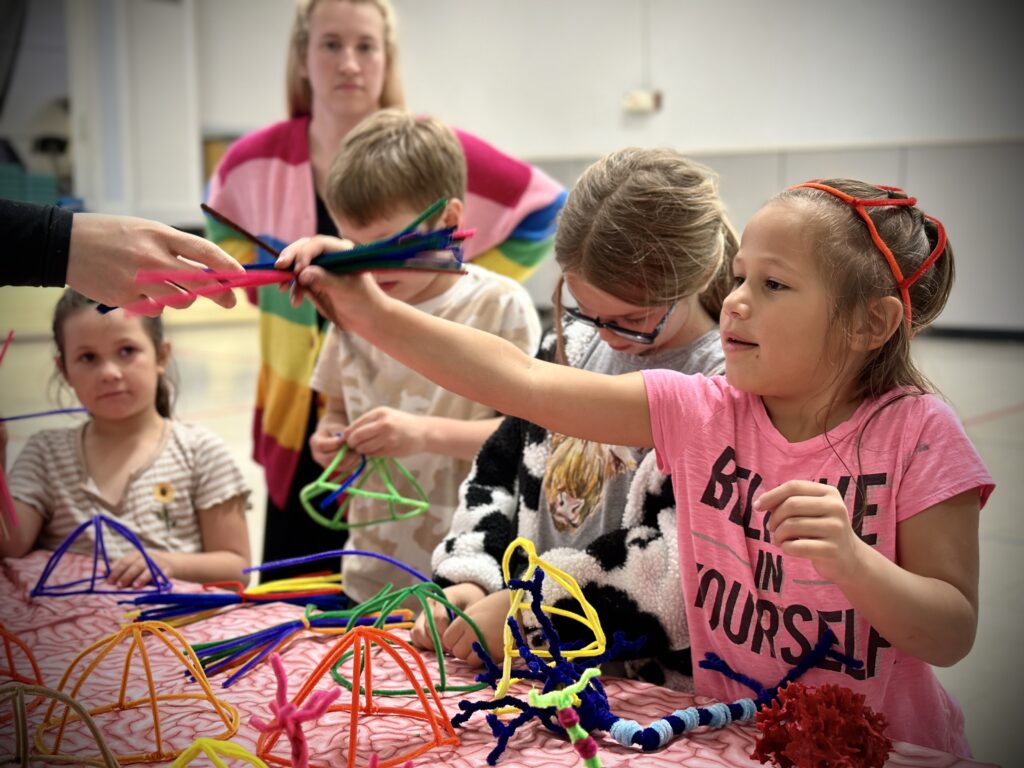

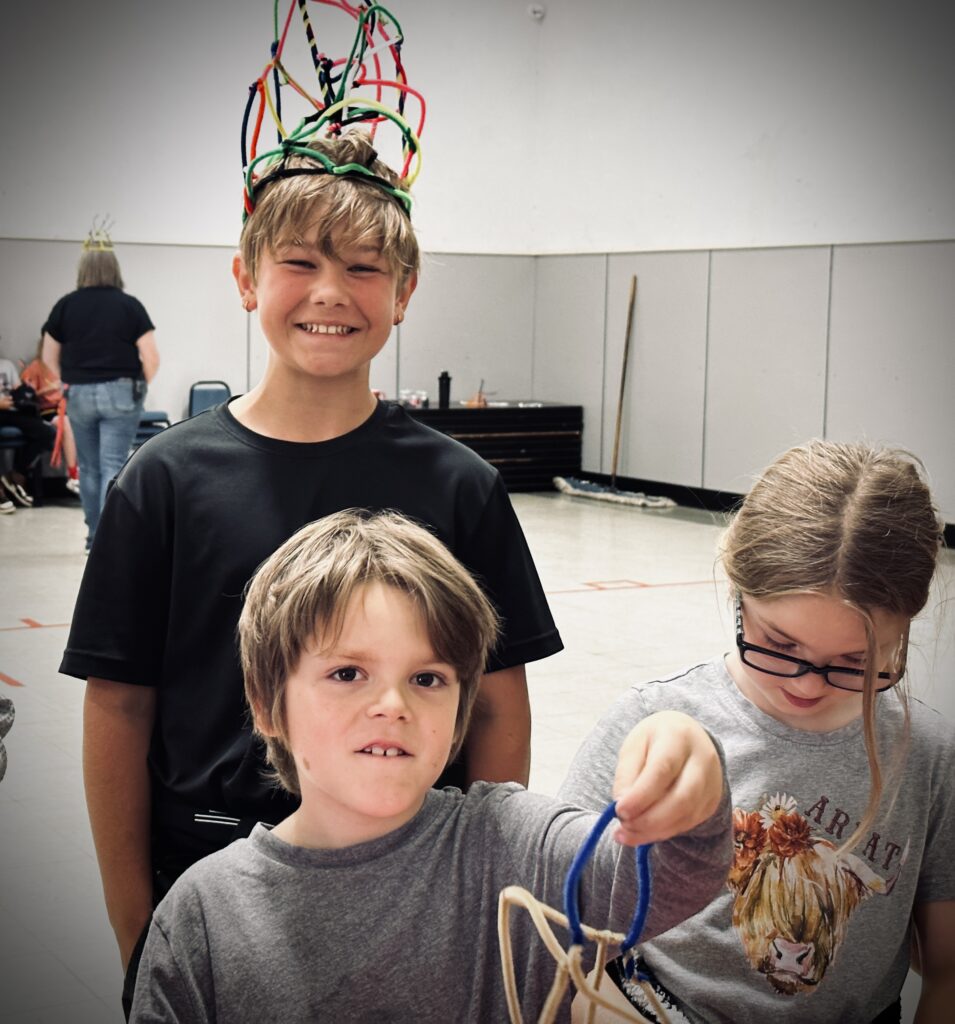
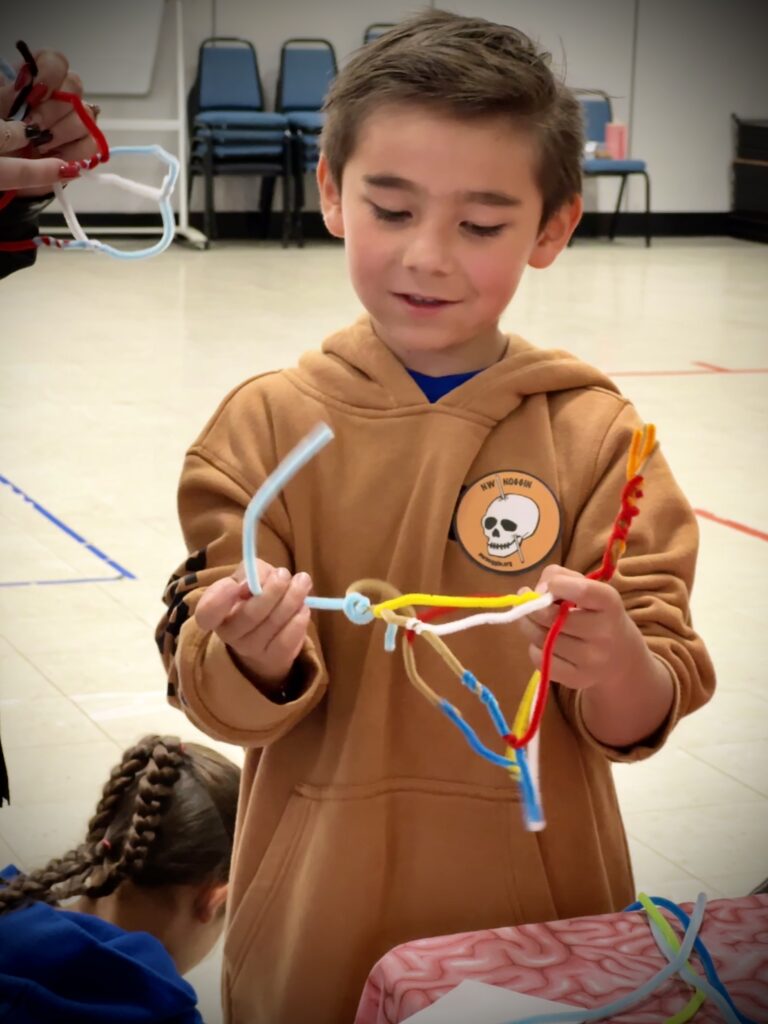
MAKE YOUR OWN: Brain cell hats!
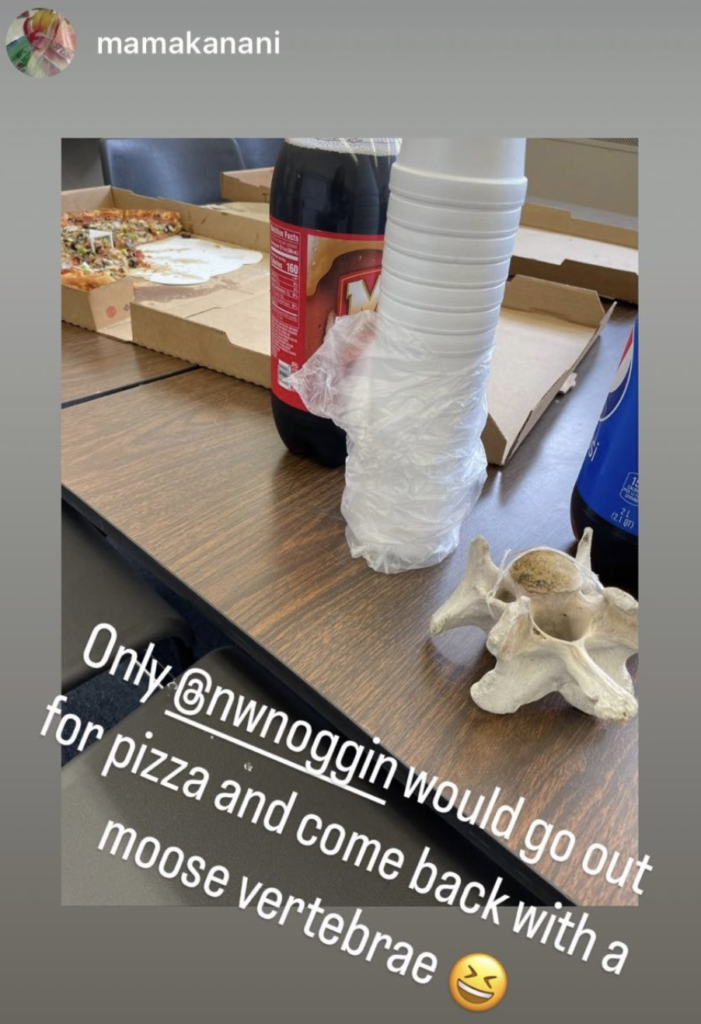
DAY TWO: High school
More art, brains, octopi – and new ways of naming cells!
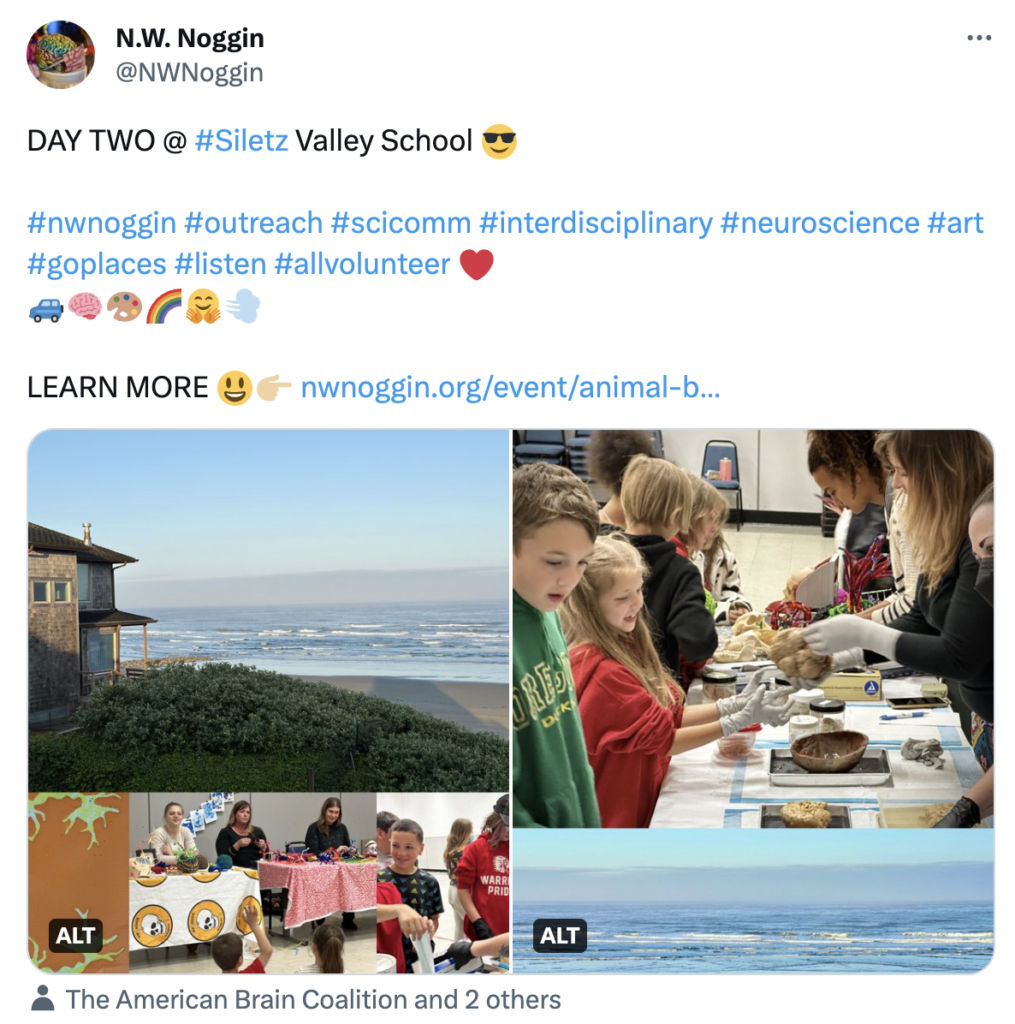
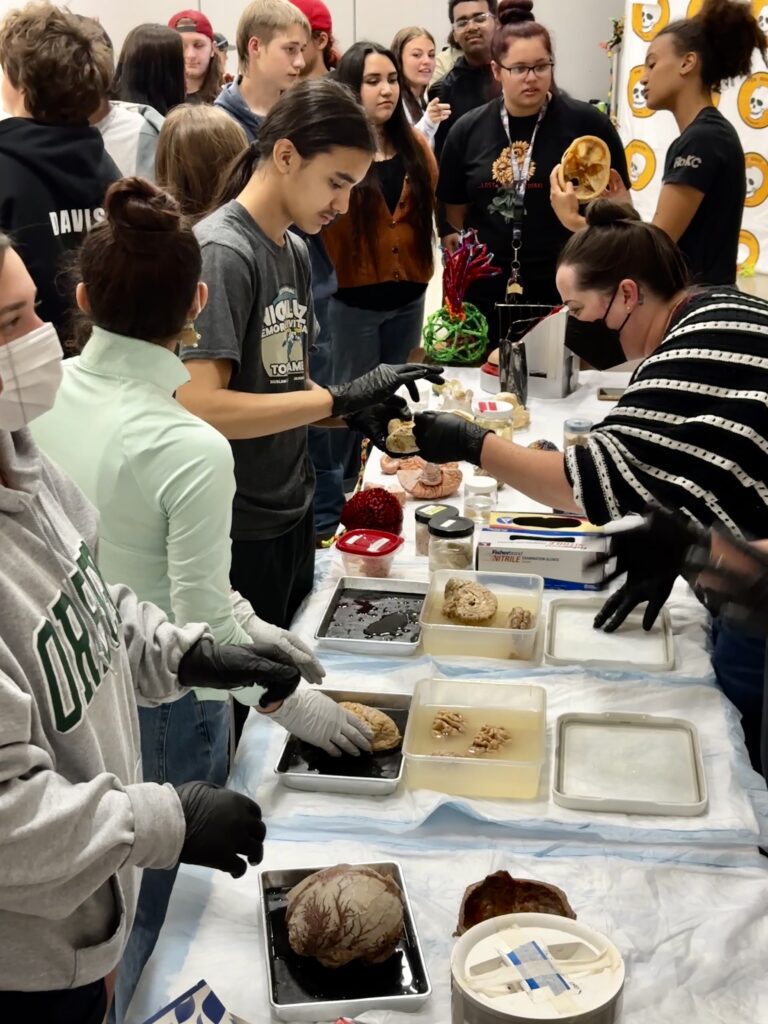
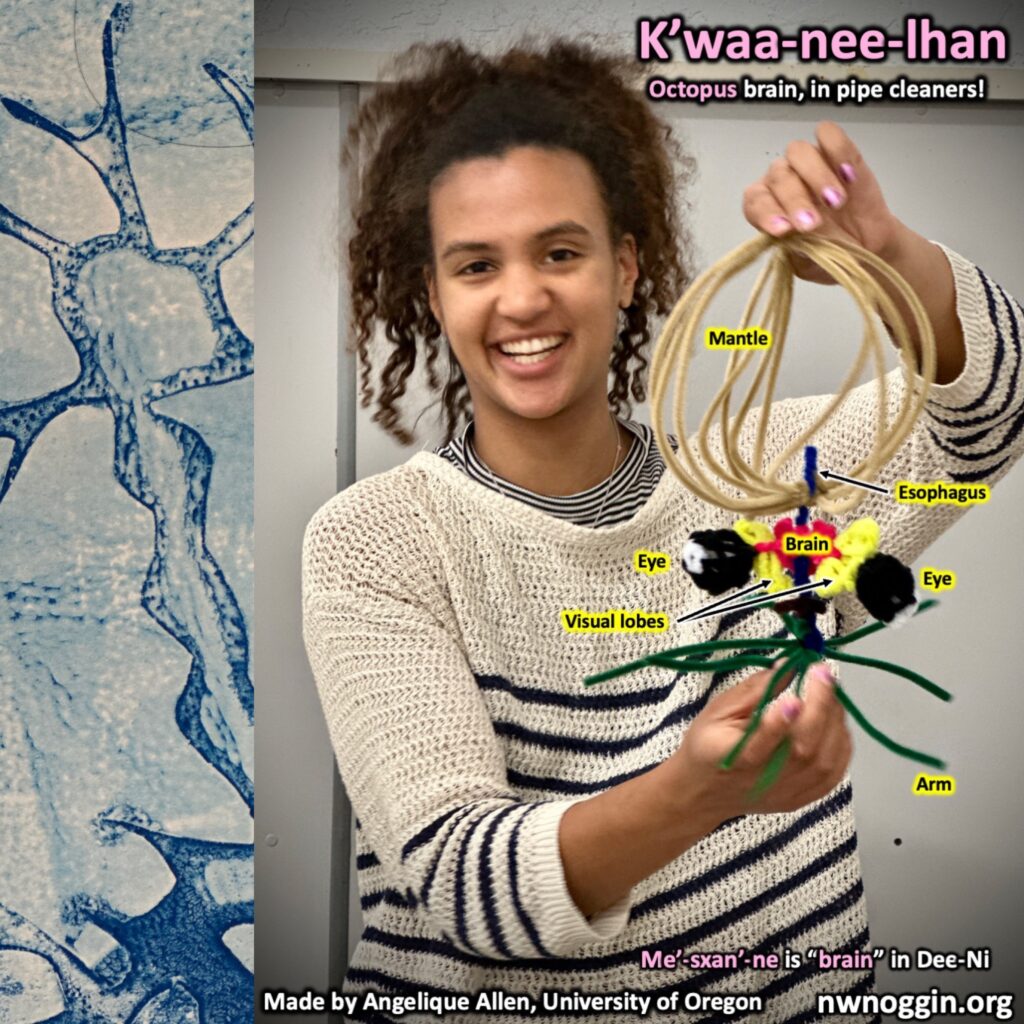
Angelique Allen from the University of Oregon brought Tube, a lab octopus she also re-created in pipe cleaners! An octopus brain, explained Angelique, has at least THIRTY lobes, with over half its 500 million brain cells found in ganglia that serve its eight arms.
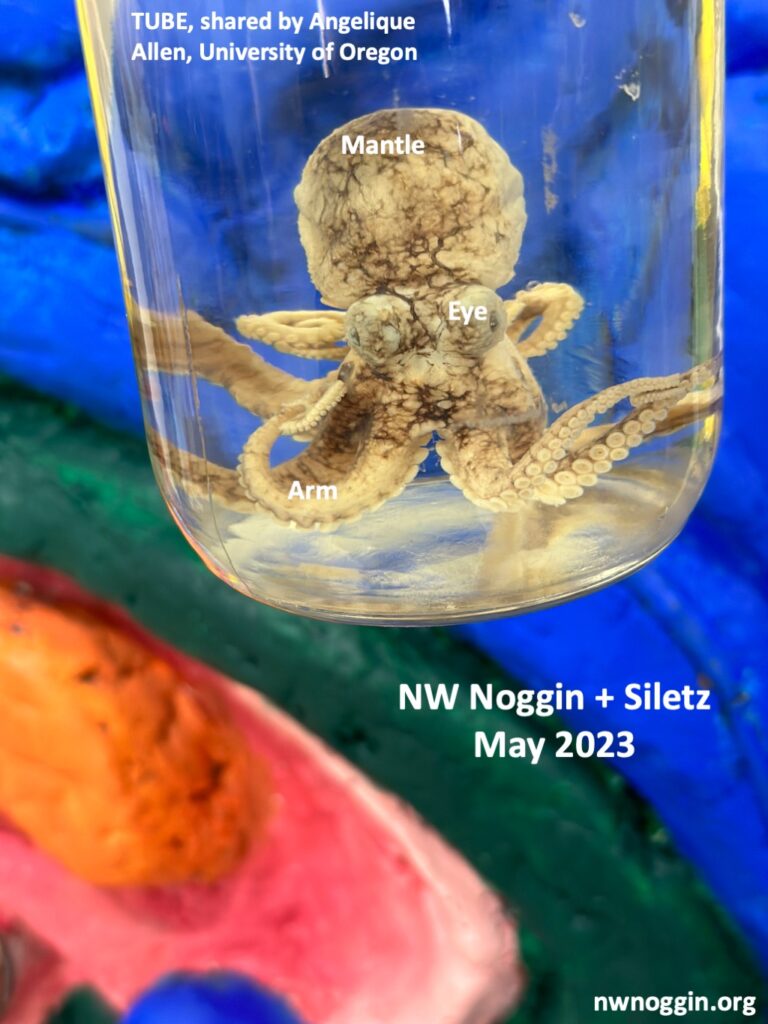
The esophagus runs right through the brain, with organs stuffed into the head-like mantle!
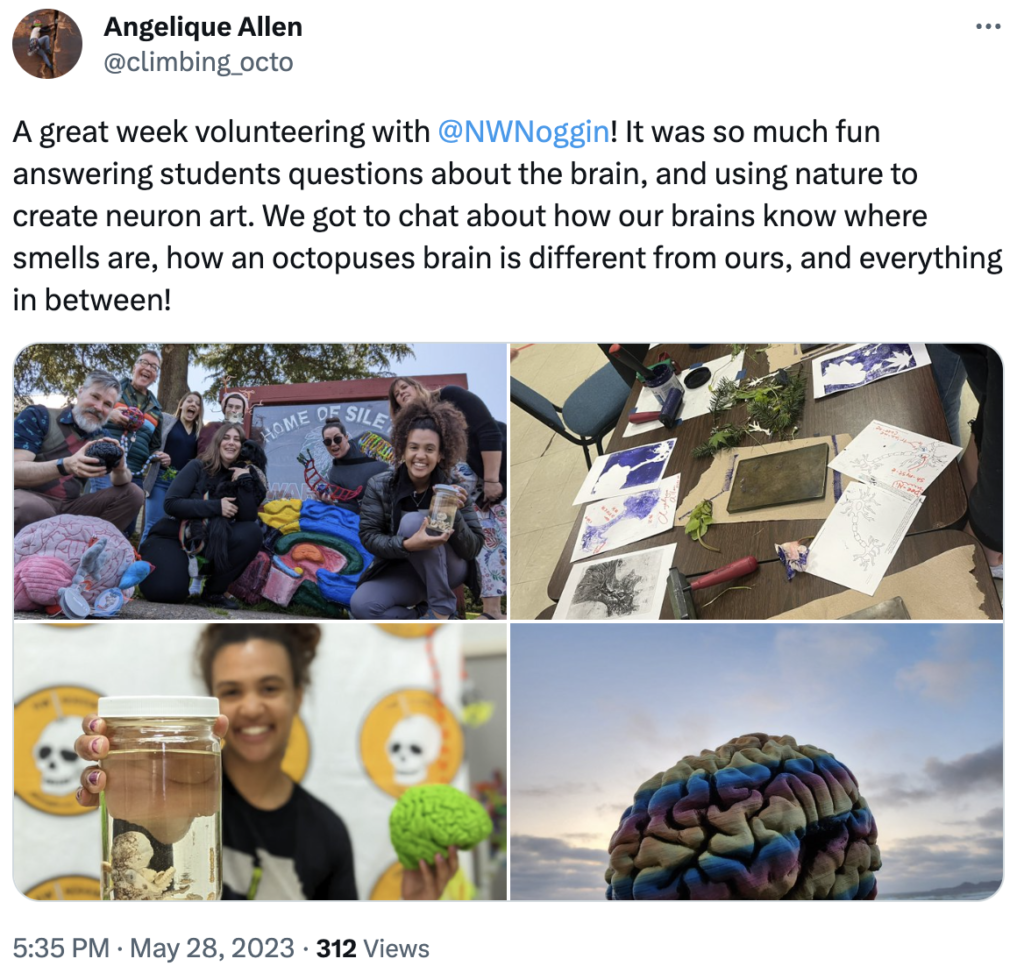
“…O, to have it’s nine brains,
— Stewart Stafford
To spread a migraine load,
Fogless coordinates clear,
A tower fire, now contained…”
LEARN MORE: Functional organization of visual responses in the octopus optic lobe
LEARN MORE: Where Is It Like to Be an Octopus?
LEARN MORE: Diffusion MRI Connections in the Octopus Brain
LEARN MORE: Cephalopod Brains: An Overview of Current Knowledge to Facilitate Comparison With Vertebrates
LEARN MORE: Recording electrical activity from the brain of behaving octopus
LEARN MORE: Cephalopod Behavior: From Neural Plasticity to Consciousness
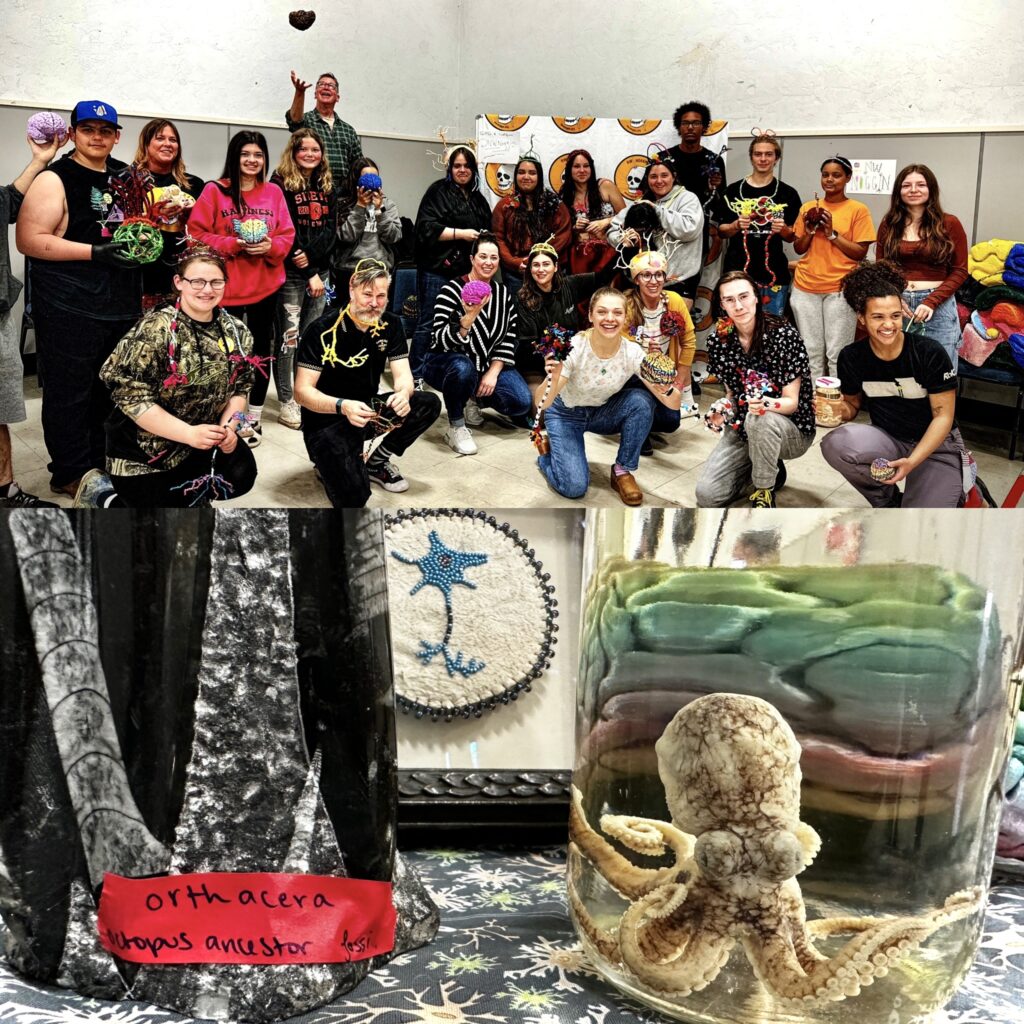
Do scientific terms have to lean on Latin and Greek?
We also discussed how European and North American scientists initially named many biological structures, including parts of the neuron, based on what they saw, using terms from Latin and Greek, languages they were familiar with and had typically learned in school.
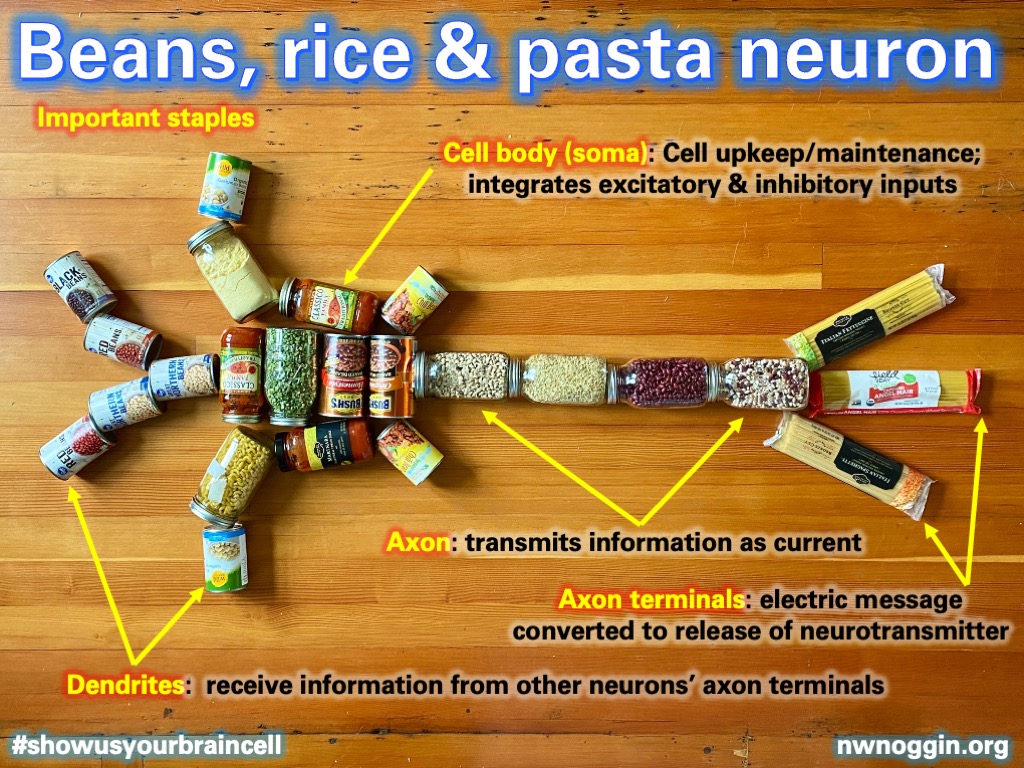
LEARN MORE: Brain Basics: Know Your Brain
LEARN MORE: Word Origins of Common Neuroscience Terms for Use in an Undergraduate Classroom
LEARN MORE: The language of medicine
LEARN MORE: Latin and Greek in gross anatomy
LEARN MORE: An Introduction to Medical Terminology: Greek and Latin Derivations
LEARN MORE: Observations of synaptic structures: origins of the neuron doctrine and its current status
LEARN MORE: Etymology and the neuron(e)
“Dendrite,” for example, is Greek for “branch,” and early scientists chose this term for the branch-like, membrane-bound filaments that project off the cell body (or soma – Latin for “body”) and serve as inputs for incoming synaptic connections from other neurons.
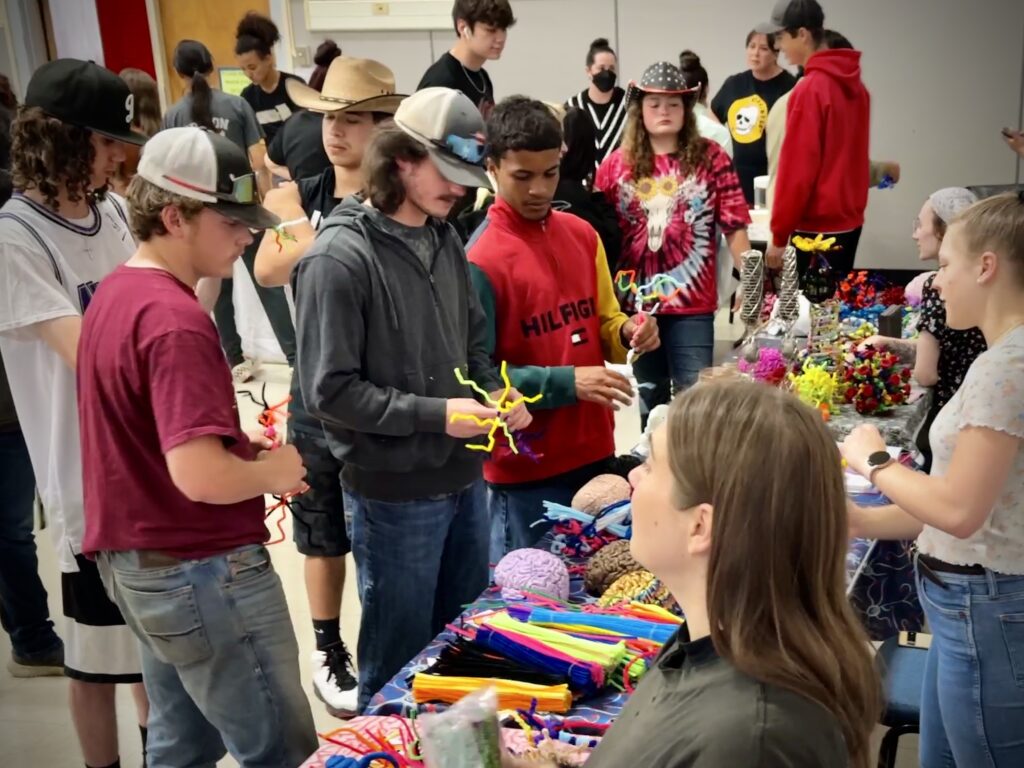
But what do YOU see? Are there other terms and languages that might seem more natural?
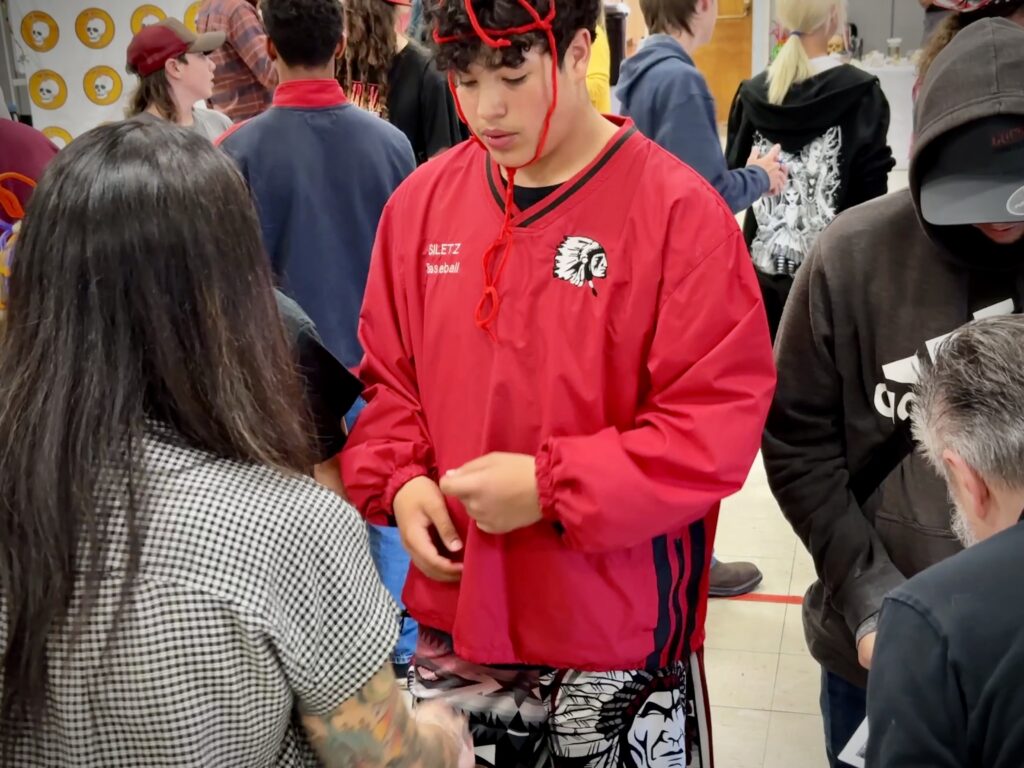
Tree needles and lightning!
One student saw “tree needles” instead of branches for dendrites, and decided on the Dee-ni word “k’wee-de” as a good descriptor. And the axon (from the Greek “axis,” for axis of the body) became the more poetic, and more functionally descriptive “ch’vtlh-k’vsh tin’sh”: long, skinny lightning!
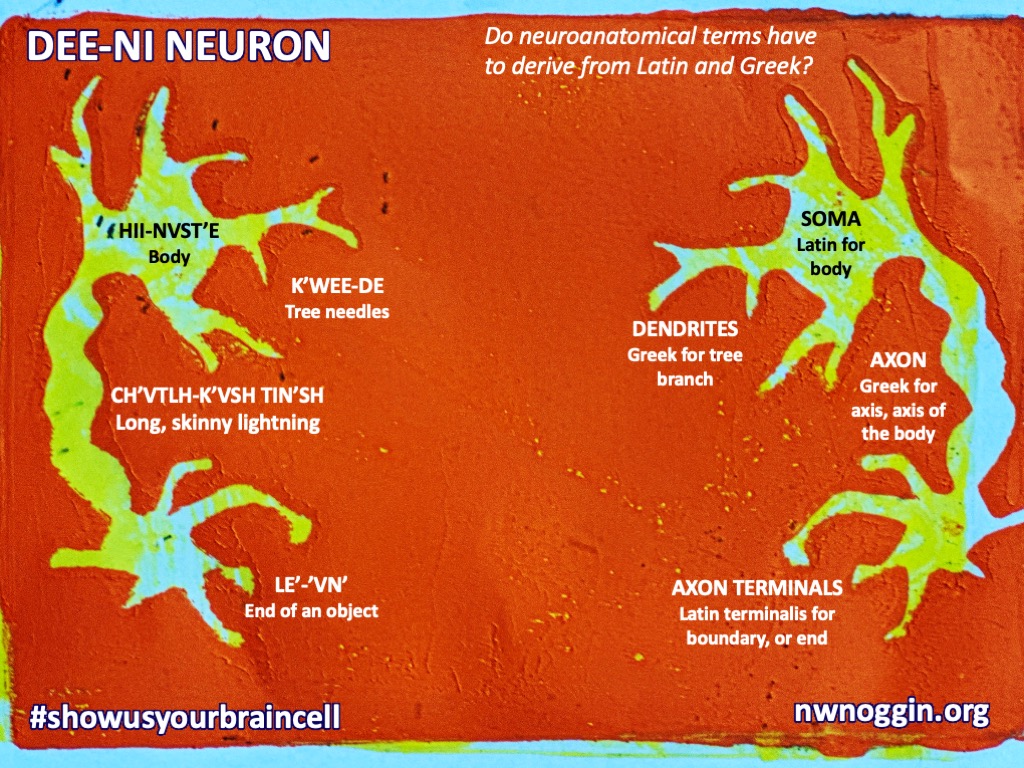
LEARN MORE: Siletz Dee-ni Talking Dictionary
LEARN MORE: Siletz Dee-ni Language
LEARN MORE: Siletz Language Program
LEARN MORE: Giving New Life to an Ancient Language
DAY Three: Middle school
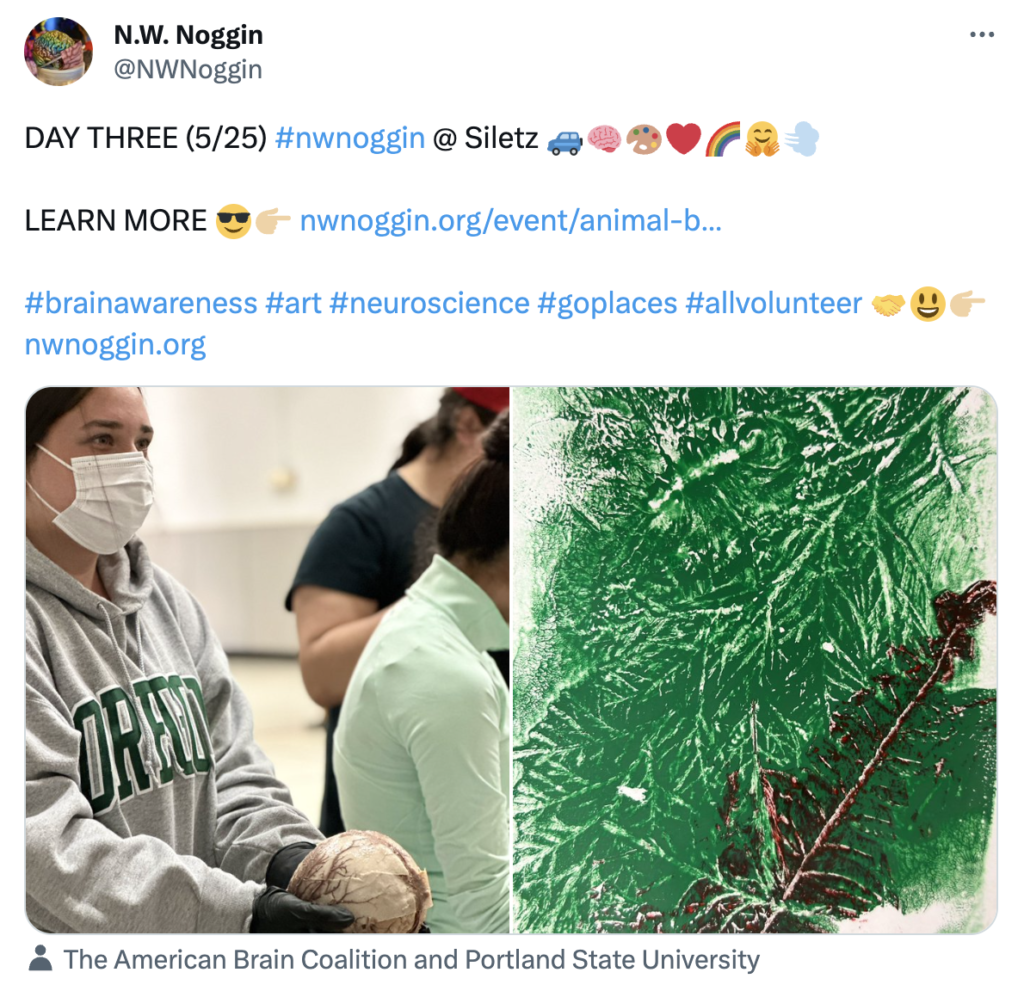
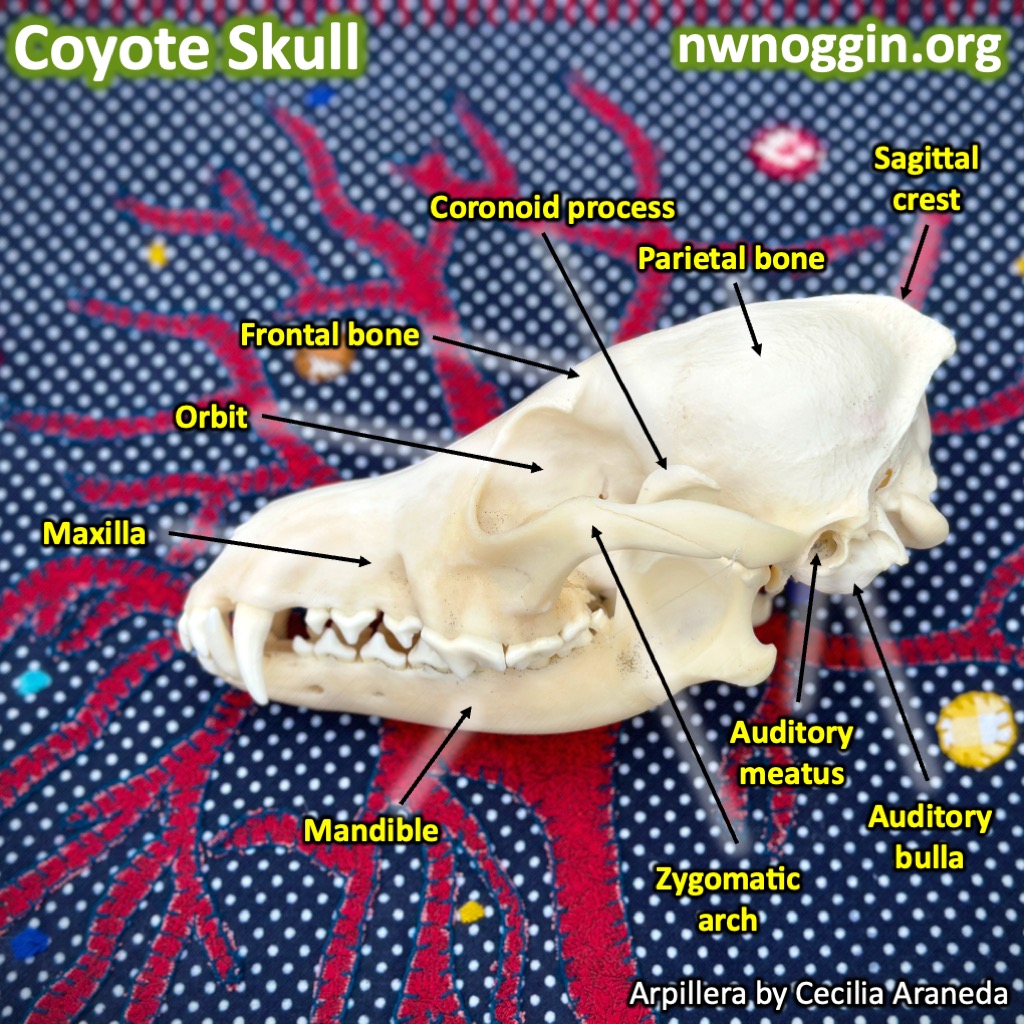
Our final day in Siletz!


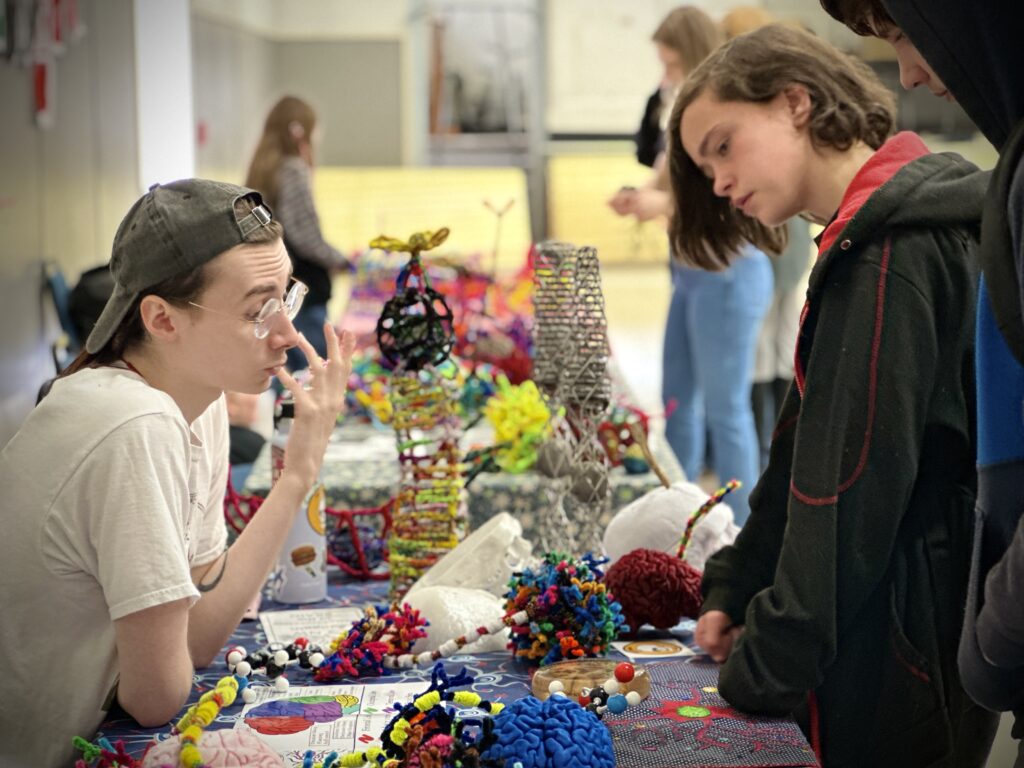
We made more art, heard more stories and considered more questions from middle schoolers, and enjoyed a second fantastic lunch prepared by Siletz students and their skilled culinary instructor, Patrick Clark! It was exciting to hear how Siletz had upgraded their school kitchen facilities and was training young people to make such tasty, local and nutritious meals.
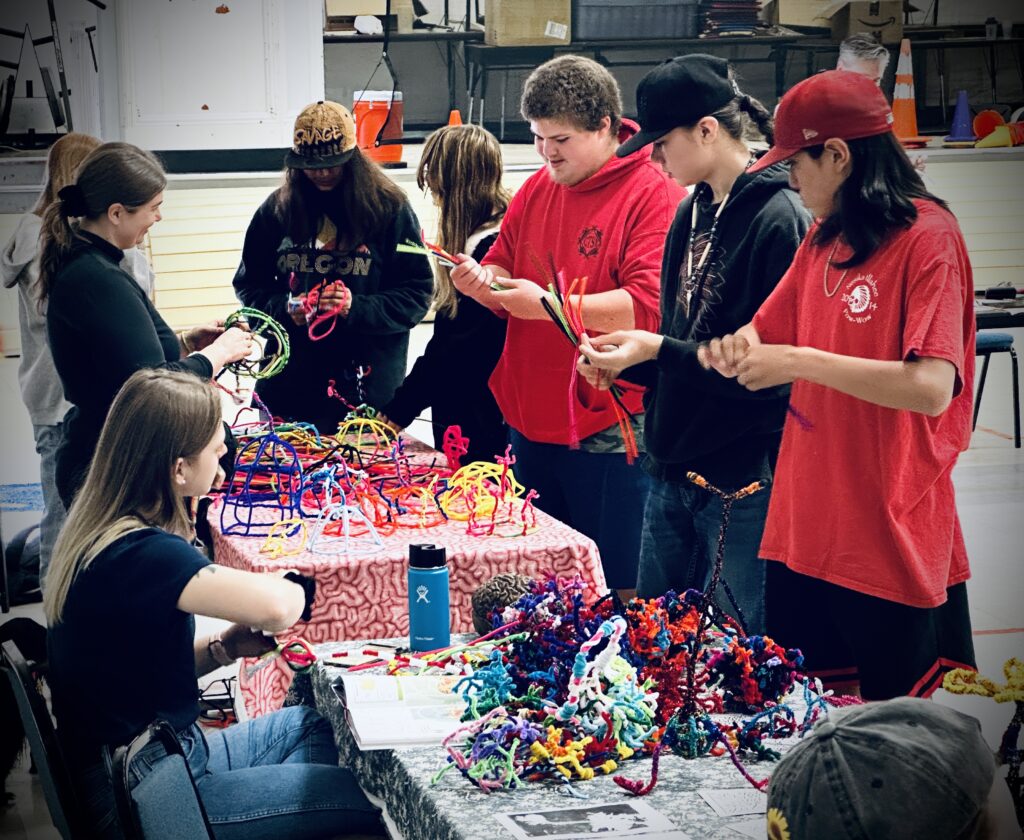
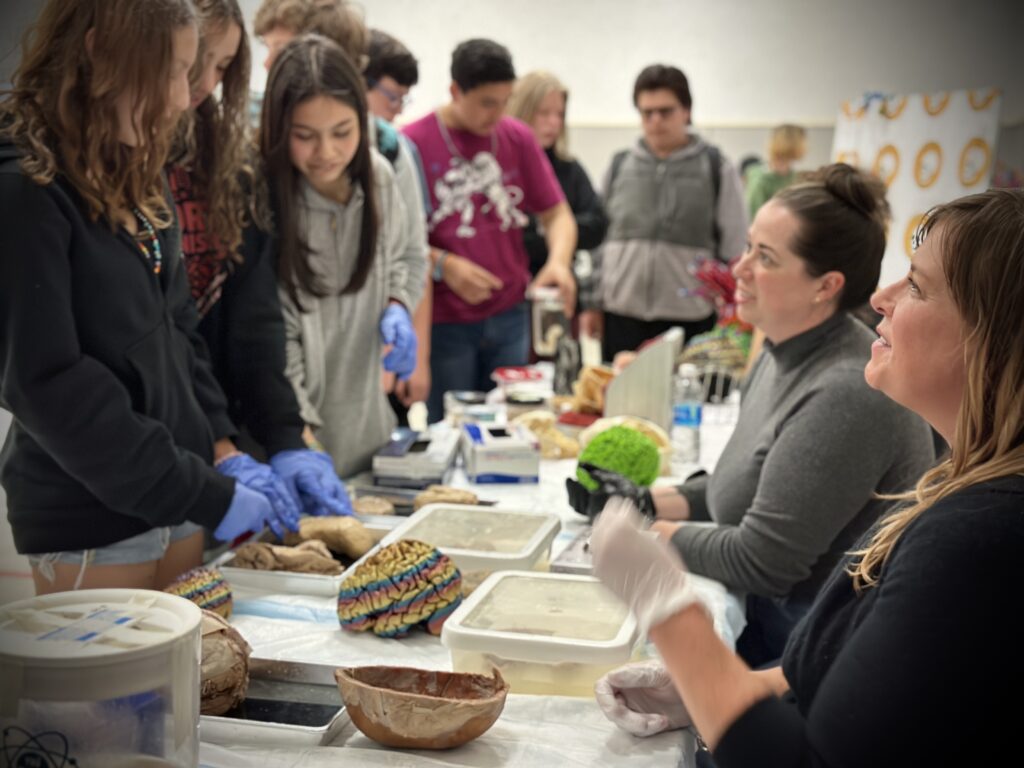

Tremendous thanks to the students, teachers and staff at Siletz (and to Theresa Smith in particular!!), to the Roundhouse Foundation, PARC and the PDX 3D Printing Lab – and to our extraordinary Northwest Noggin outreach volunteers!
